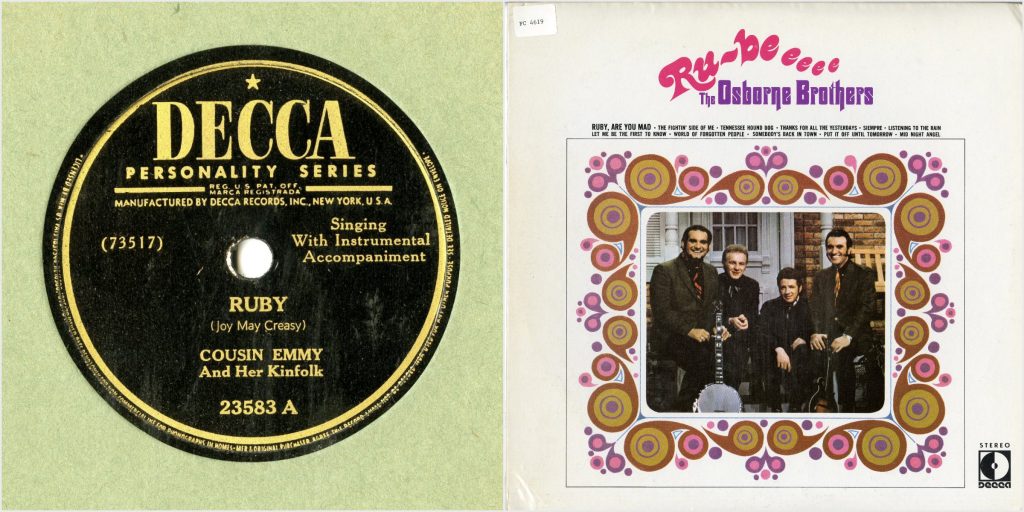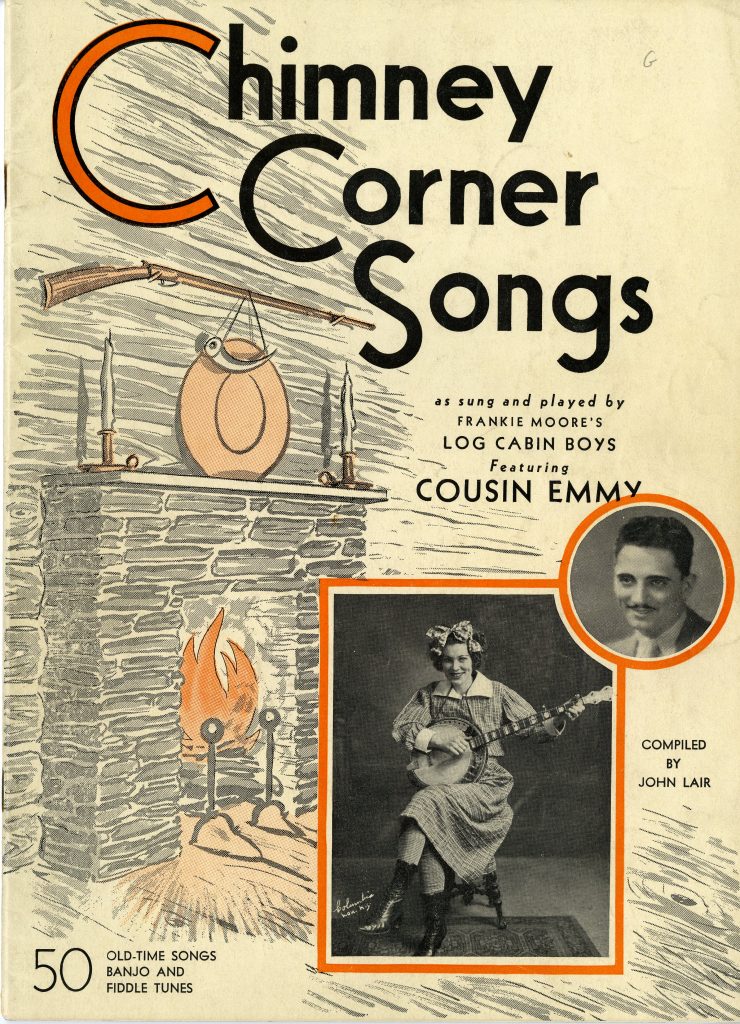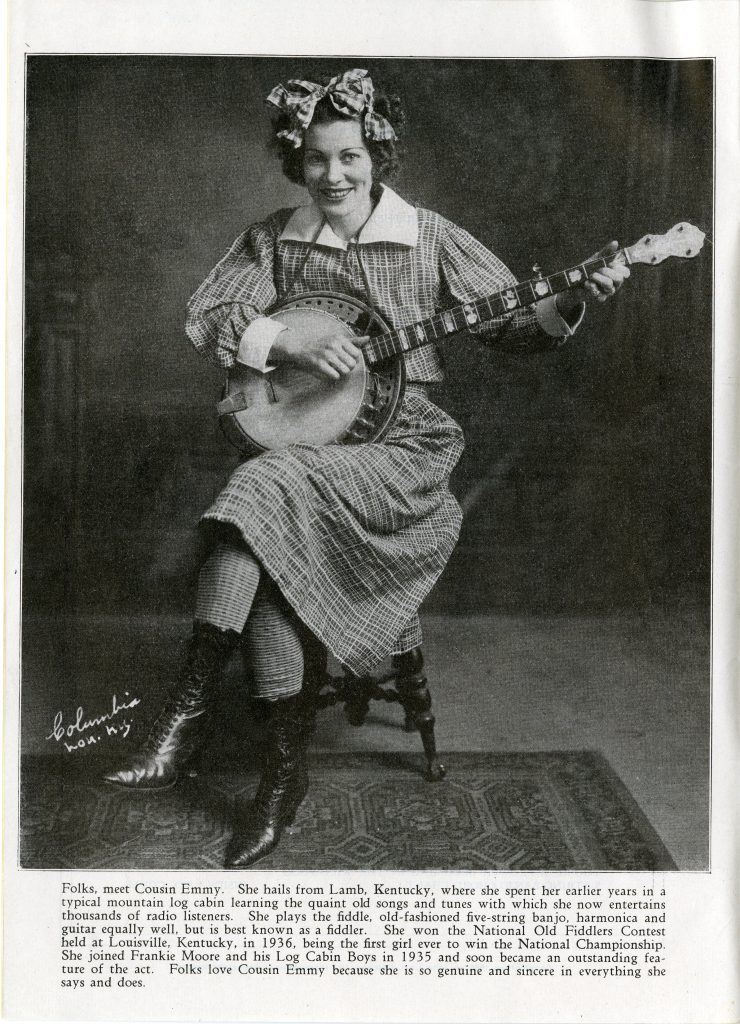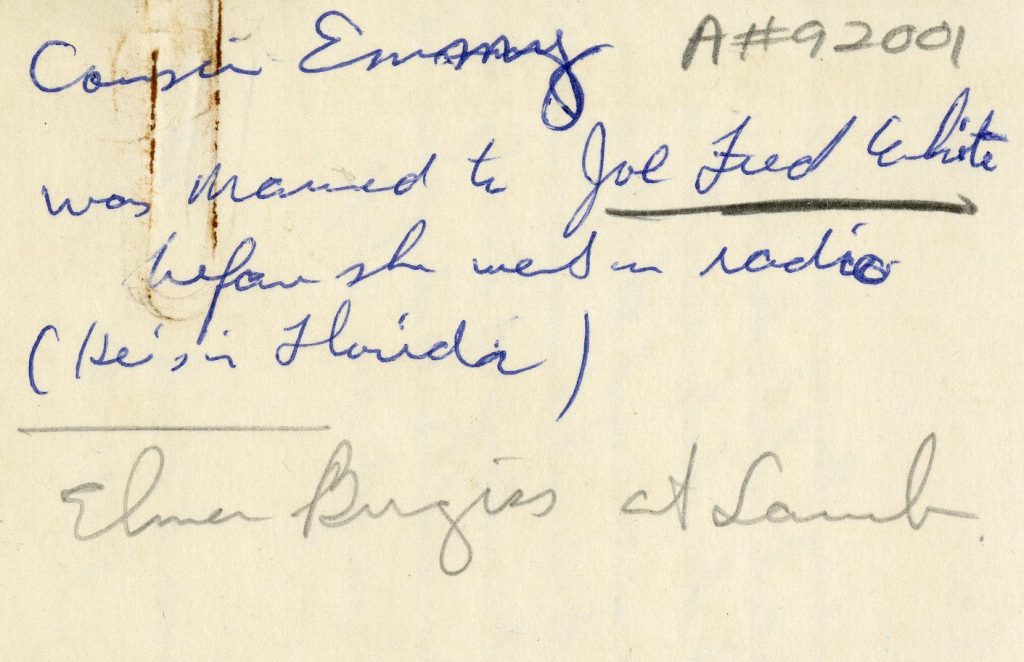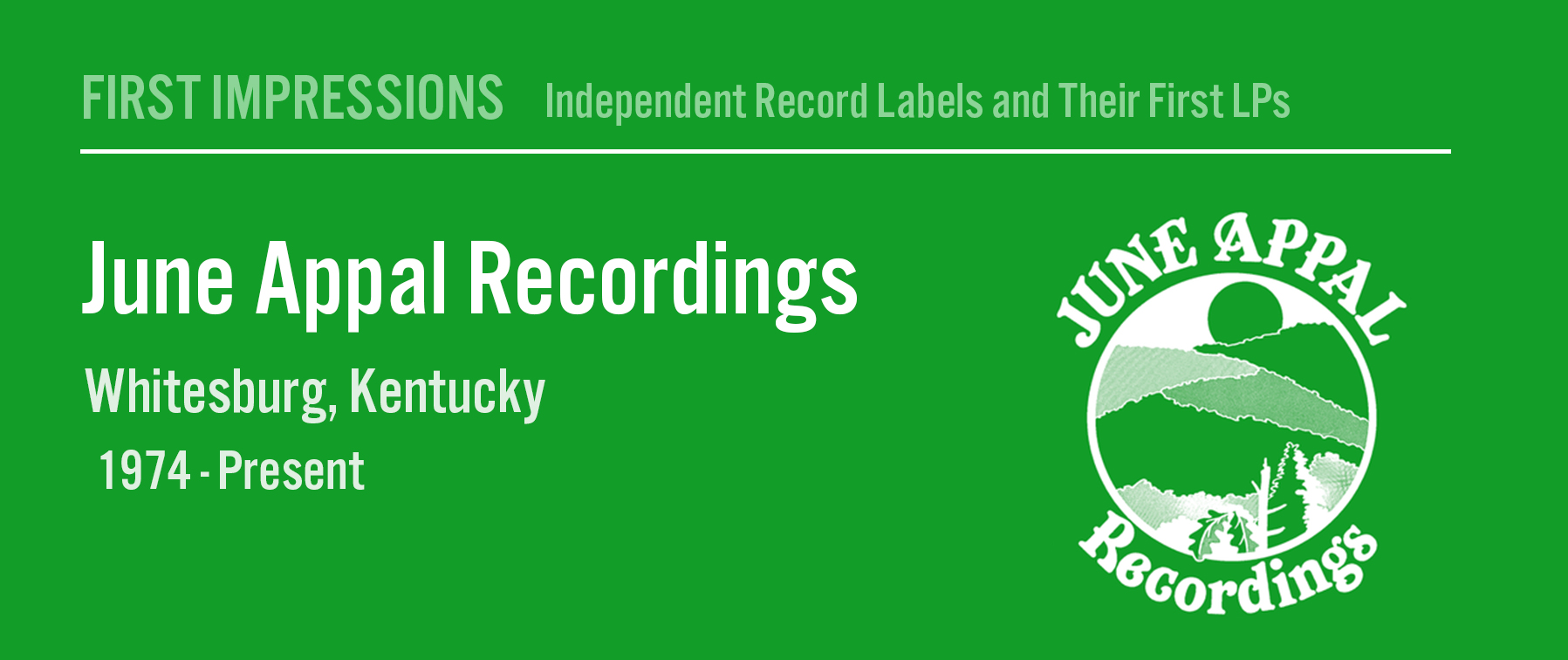
“First Impressions” is an ongoing series on the “first records” of several independent record labels releasing folk, blues, bluegrass, country, and other vernacular musics. Drawing from records and other materials in the Southern Folklife Collection, the focus of this virtual exhibition is on the albums that started it all for these labels in the LP era.
The Album
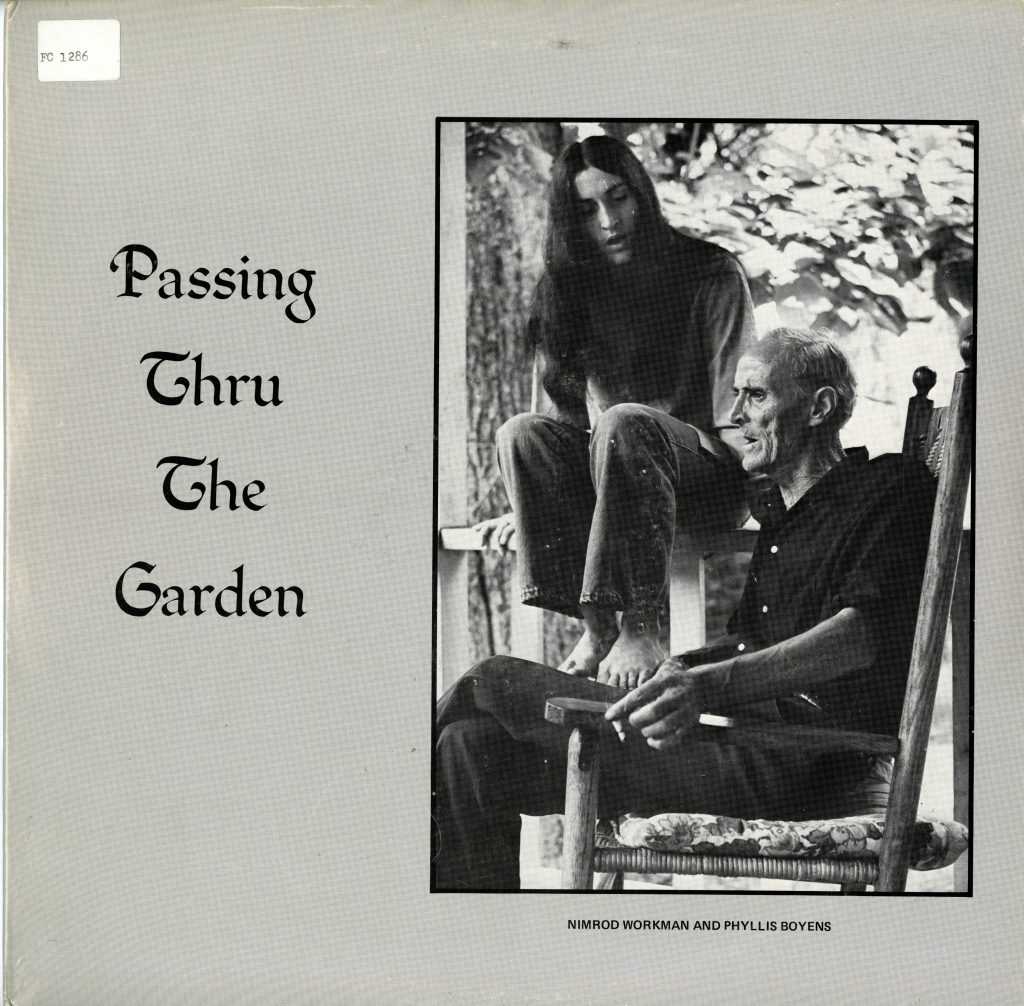
June Appal Recordings was founded to release traditional and contemporary mountain music, recorded by and for the people of the Southern mountains near their Whitesburg, Kentucky home. At the time, it would have been difficult to find a more complete embodiment of that mission than Nimrod Workman and Phyllis Boyens. Nimrod Workman had been a mine worker, singer, and union activist in the mountains of West Virginia for over six decades by the time June Appal Recordings was created in 1974. Phyllis Boyens, Nimrod’s daughter, had been raised in that culturally rich environment and quickly took to the musical and activist inclinations of her parents and grandparents. Passing Thru The Garden marked the recorded debut of June Appal, Nimrod and Phyllis, the first example of the cross-generational efforts that would come to define June Appal as a label. Most of the songs on Passing Thru The Garden are credited as arranged by Nimrod Workman, and most are sung unaccompanied by instrumentation. Nimrod and Phyllis take many of the songs alone, while joining voices on others. Listen to excerpts of two tracks from the album, and read on below.
Here is an excerpt from Track 1, “I Am a Traveling Creature,” featuring both Nimrod and Phyllis:
Also listen to a clip from Track 10, “Oh Death,” featuring Phyllis Boyens with some spare instrumentation:
NIMROD WORKMAN
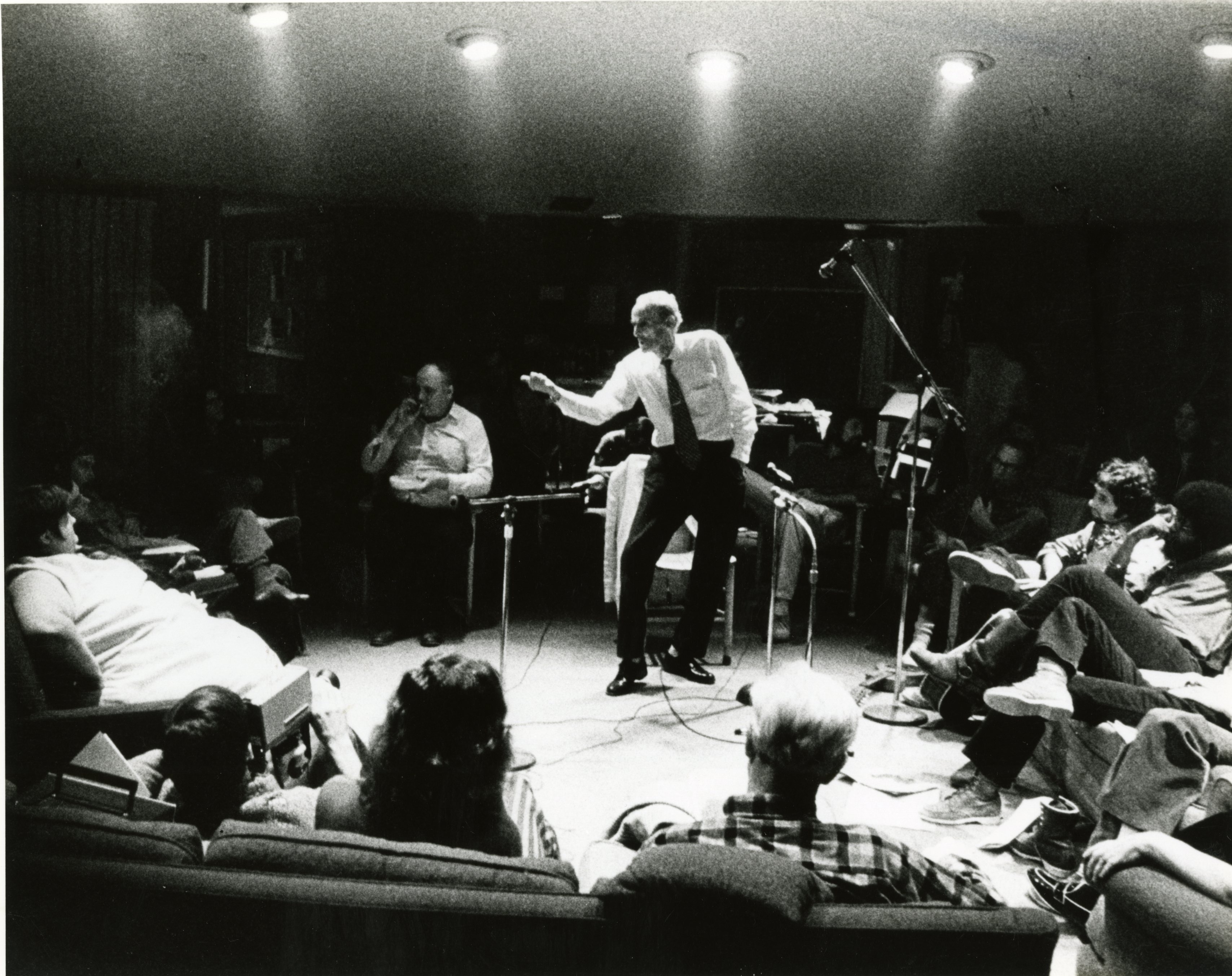
Born in 1895 in Inez, Kentucky, Nimrod Workman moved to West Virginia to work in a coal mine at the age of 14. For the next 42 years, Workman continued to mine coal, until black lung and other injuries forced him to retire. He was an active union member and activist for worker’s rights from the early years of his career, but he became most well known later in life as a singer of unaccompanied ballads. Nimrod Workman was already 79 in 1974, the year his first album, Passing Thru The Garden, was released. While he was an active performer for the rest of his life, he recorded only one more album, Mother Jones’ Will, for Rounder Records in 1978. Workman continued to be associated with his career as a coal miner, frequently singing coal mining songs and contributing to different coal mining-related projects. He recorded several songs for Come All You Coal Miners, a collection of coal mining songs also produced by Rounder Records, and he appeared in the Academy Award-winning documentary Harlan County, USA.
His appearance in the acclaimed documentary, which followed the “Brookside Strike,” translated into a brief appearance in the 1980 Loretta Lynn biopic Coal Miner’s Daughter. In the film, Nimrod leads a group of mourners at a funeral in a rendition of “Amazing Grace.” The recording appears on the soundtrack to the movie, and Nimrod can be heard calling out each line before the rest of the crowd joins in. Listen to a brief clip from the song below:
At first glance, Workman’s appearance always seemed to announce his increasing age – from his uniquely dimpled cheeks to his tall and lanky frame. However, whenever Nimrod Workman sang or moved, he constantly betrayed just how young his spirit was. To help demonstrate that trademark youthfulness, below is a clip from Carry It On, a nine-part series produced by the Southern Folk Cultural Revival Project in 1984 and aired on PBS. In the clip, Nimrod states his age (“87 in years, 18 in feelings”) and demonstrates to his daughter Phyllis Boyens and host Mike Seeger how to do the “frog walk.” The full video, VT-20004/21 in the Southern Folk Cultural Revival Project Collection (20004) is streaming through UNC libraries here.
Phyllis boyens

Phyllis Boyens-Liptak was born Phyllis Workman in 1947 in West Virginia, one of the youngest of Mollie and Nimrod Workman’s 13 children. Raised by musical parents, she quickly took to singing the songs that her father sang, and frequently accompanied him in casual venues and on tour. 1974’s Passing Thru the Garden was, like her father, also Phyllis’s first album. Also like Nimrod, Phyllis only recorded one more album, the 1983 solo outing I Really Care. Phyllis was active in the same musical and activist groups as her father, contributing songs to albums like They’ll Never Keep Us Down: Women’s Coal Mining Songs and touring with the Southern Folk Cultural Revival Project. Although she did not have a prolific recording career, she maintained an active presence in the folk music world, and she also expanded into the world of acting. Phyllis had appeared in the documentary Harlan County, U.S.A. alongside her father, and attention from that appearance helped her land a supporting role as Loretta Lynn’s mother in the film Coal Miner’s Daughter.
Phyllis’s mother Mollie Workman was also an accomplished singer, as she demonstrates in this field recording made by Mark Wilson for Rounder Records’ “North American Traditions Series.” In this clip from FT-20503/16073, Mollie Workman sings “I’m Going Back With Jesus When He Comes” unaccompanied:
THE label
The Appalachian Film Workshop was founded in 1969 in Whitesburg, Kentucky, part of the United States government’s legislative War on Poverty. Federal funding helped create several of these community workshops, which aimed to provide access to film production training and education in impoverished areas. In 1974, the organization underwent a few major changes, diversifying beyond film production and evolving into an independent nonprofit company. Around this time, the name of the organization was shortened to Appalshop, reflecting broader goals and a new direction.
These 1974 changes included the creation of June Appal Recordings, a record label within Appalshop. The goals of this new label reflected those of Appalshop as a whole – producing content for, by, and about the people that live in Appalachia. The June Appal discography includes Kentuckians like Buell Kazee, I.D. Stamper, and Nimrod Workman, but it also includes a broad range of traditional and contemporary folk musicians from across the U.S. June Appal has maintained a relatively steady pace since 1974, releasing more than 80 albums on LP, CD, or cassette in the past 45 years since its founding. Some of that discography is still available through the June Appal portion of Appalshop’s website, found here.

June Appal Recordings is unique among its contemporary independent record labels for many reasons, chief among them being its origins within a cooperative nonprofit company. Due to these unique beginnings, there are no individual founders widely credited with the creation of June Appal Recordings. However, there were of course individuals involved in the creation and maintenance of June Appal from its beginnings, including: Rich Kirby, who produced many records on the label and recently retired from Appalshop’s Mountain Community Radio station, and Jack Wright, who recorded on June Appal with The Payroll Boys, produced a film for Appalshop, and ultimately became a professor of film.
THE Southern folk cultural revival project
The Nashville-based Southern Folk Cultural Revival Project (SFCRP) was founded in 1966 by musicians and activists Anne Romaine and Bernice Johnson Reagon. The primary goal of the SFCRP was to “present traditional musicians from black and white cultures in performance together at a time when this was considered controversial.” In pursuit of that goal, the group recruited a large number of musicians, including Nimrod Workman and Phyllis Boyens, to perform on tour together. However, the work of Romaine and the SFCRP extended far beyond these tours. One such endeavor was the production of a nine-part series on traditional music that aired on PBS in 1984, Carry It On. Each episode of Carry It On consisted of interviews with and performances by traditional musicians. Nimrod Workman and Phyllis Boyens are featured in an episode of the series on mountain ballads. A videotape recording of the episode, VT-20004/21 in the Southern Folk Cultural Revival Project Collection (20004), is streaming through UNC Libraries here. Watch two brief clips from the episode below, featuring Nimrod and Phyllis singing “Passing Through The Garden” together and Nimrod singing “Burglar Man” alone:
APPALSHOP FILMS
Appalshop, true to its origins, is perhaps best known for the films it produces as Appalshop Films. Appalshop’s current website hosts over 80 films, ranging from narrative features to documentaries on a wide range of subjects. There are documentaries on craftspeople, like 1976’s Quilting Women and 1980’s Oaksie, about eastern Kentucky basket maker, fiddler, and harp player Oaksie Caudill. There are activist documentaries and documentaries on activists and protests, like 1995’s Justice in the Coalfields and 1992’s Belinda, about Kentucky AIDS prevention and education activist Belinda Mason.
One of the largest shares of the Appalshop filmography, however, is occupied by music documentaries, following performers and traditions rooted in Appalachia. These include works on Sarah Ogan Gunning, John Jacob Niles, Lily May Ledford, Ralph Stanley, Hazel Dickens, and Nimrod Workman. In 1975, the year after the release of Passing Thru The Garden, Appalshop released To Fit My Own Category, a 35 minute documentary following Nimrod Workman. Directed by Scott Faulkner and Anthony Slone, the black and white film features interview and everyday footage and incorporates Workman’s music. Watch a brief trailer for To Fit My Own Category below, and stream the entire film for free on Appalshop’s website.
ROADSIDE THEATER AND THE LOCAL CONNECTION
Appalshop also created several other prominent divisions beyond June Appal Recordings, including the Appalshop Archive, the Appalachian Media Institute, Culture Hub, Roadside Theater, and Mountain Community Radio (WMMT 88.7). Roadside Theater, one of the earliest new divisions of Appalshop, shares the spirit of the original film workshop and June Appal Recordings. Focused on providing a platform for young people in Appalachia to tell the stories of their lives, Roadside Theater is “a company of unreconstructed Appalachians who make stories out of the kind of history ‘that generally never gets written down.'” The group began by producing and maintaining a repertoire of Appalachia-centered plays, like South of the Mountain, Brother Jack, Red Fox/Second Hangin’, and Mountain Tales. Written by and starring members of the troupe, these productions would tour around the country, visiting schools and larger performance venues along the way. The below article from the April 3, 1987 issue of the Durham Morning Herald describes a Roadside Theater stop in Carrboro that day. Sponsored by The Arts Center in Carrboro, the group was set to offer a workshop on “Storytelling from Oral History” and perform South of the Mountain at Carrboro Elementary School. Roadside Theater continues to produce and perform new plays, and more of their work and history is available here.

SHOW ME MORE!
There are an abundance of materials related to June Appal Recordings, Appalshop, Nimrod Workman and Phyllis Boyens, and the Southern Folk Cultural Revival Project in the Southern Folklife Collection, as well as an extensive portion of the June Appal catalog on LP and CD. Check out a few other items of interest below or search the collection yourself.
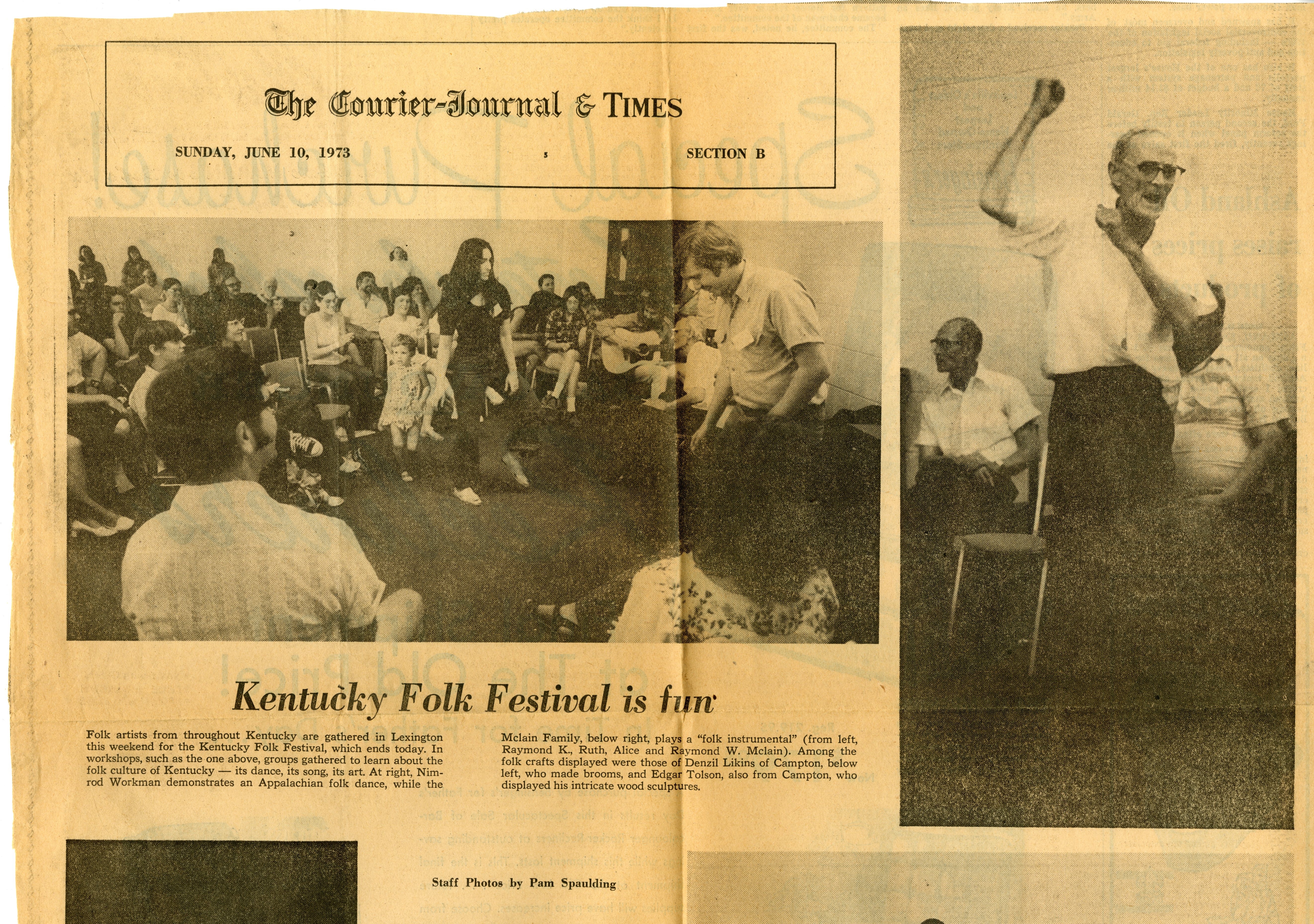
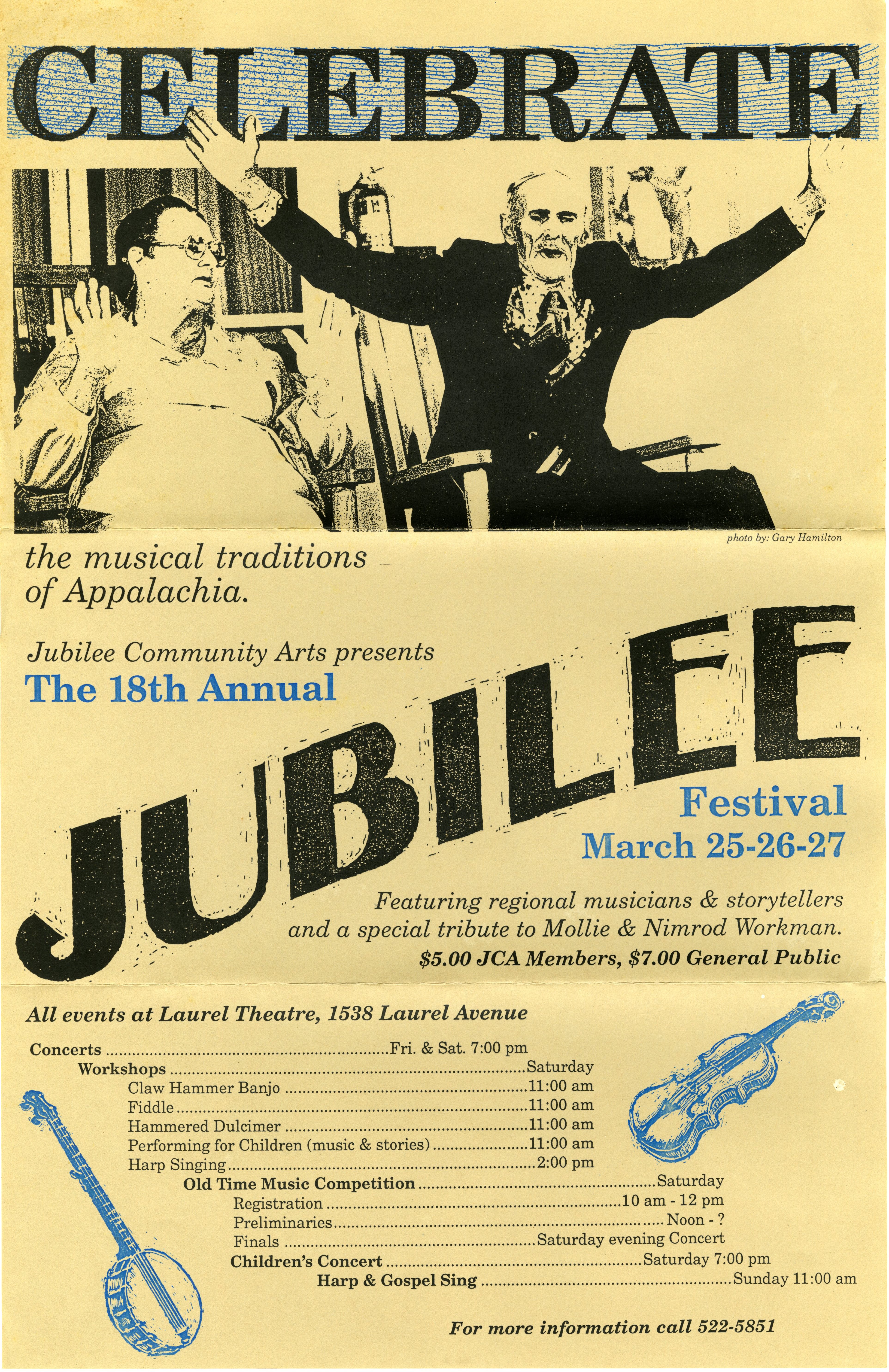
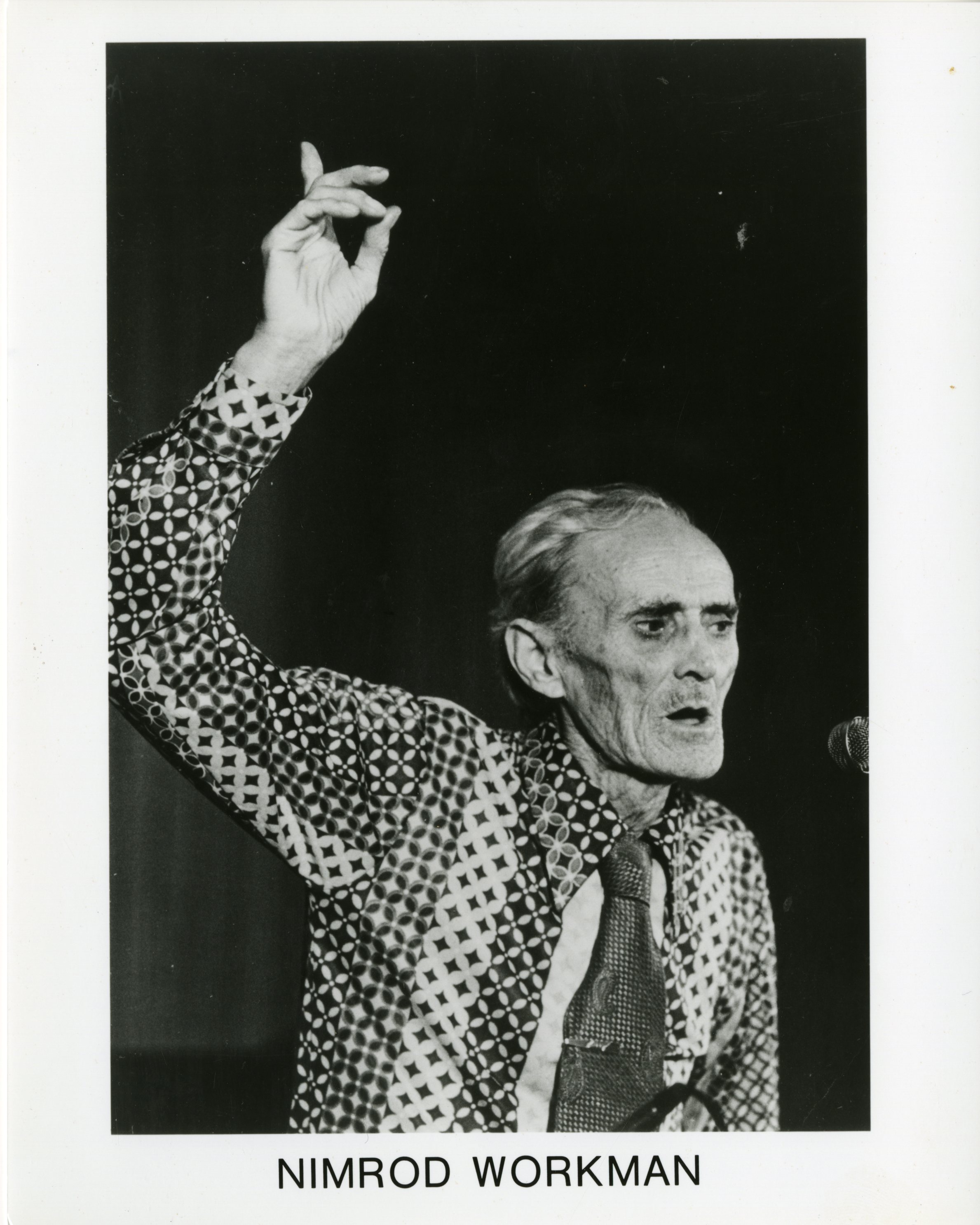
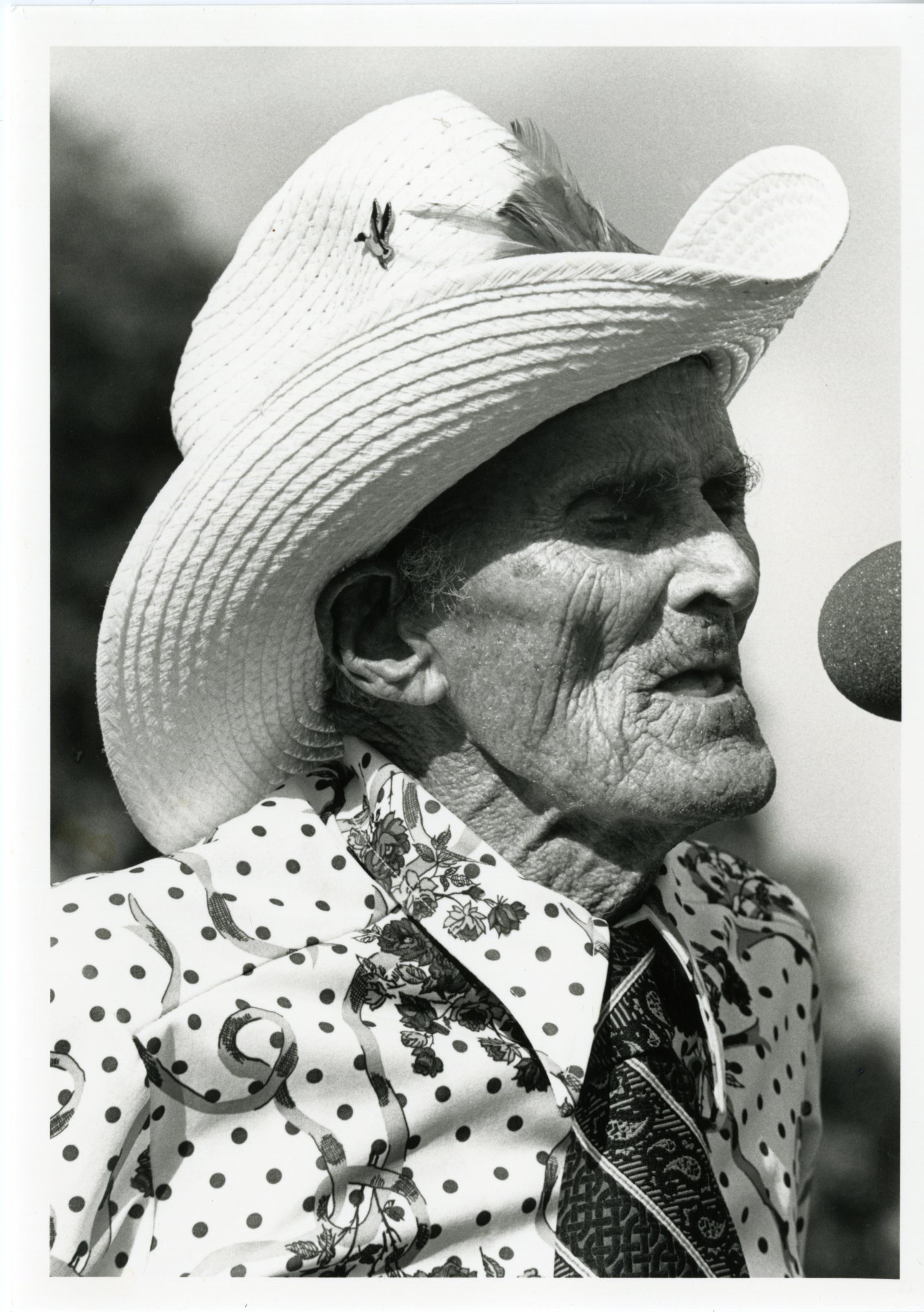
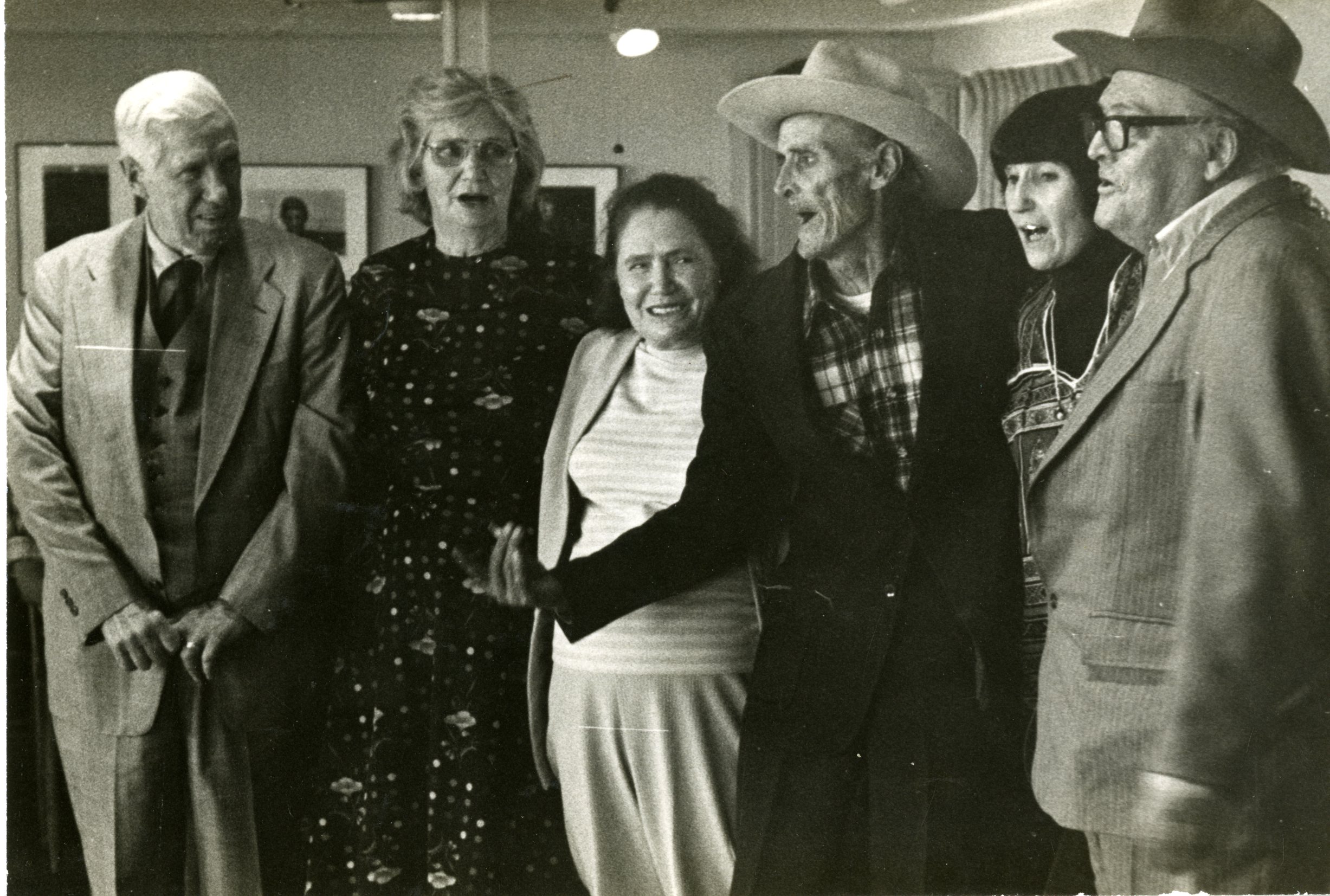

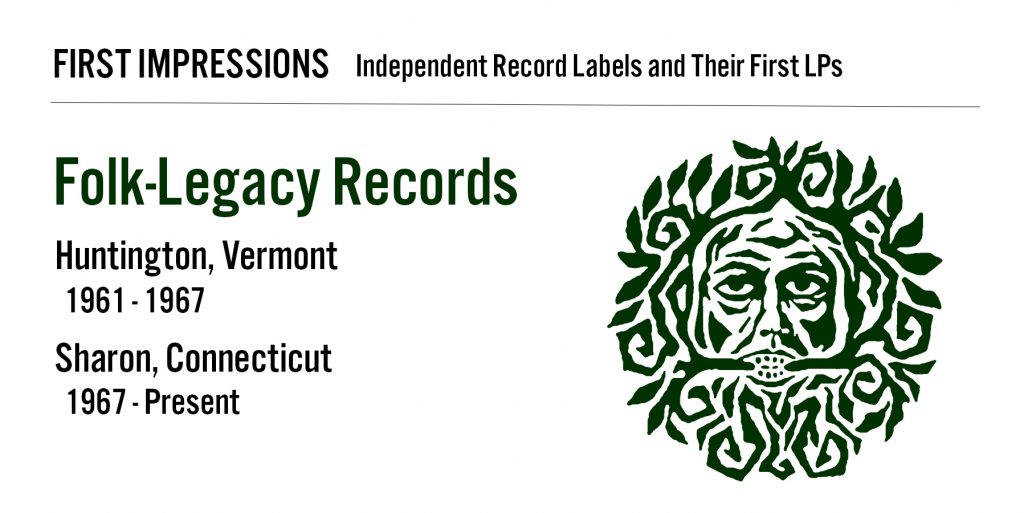

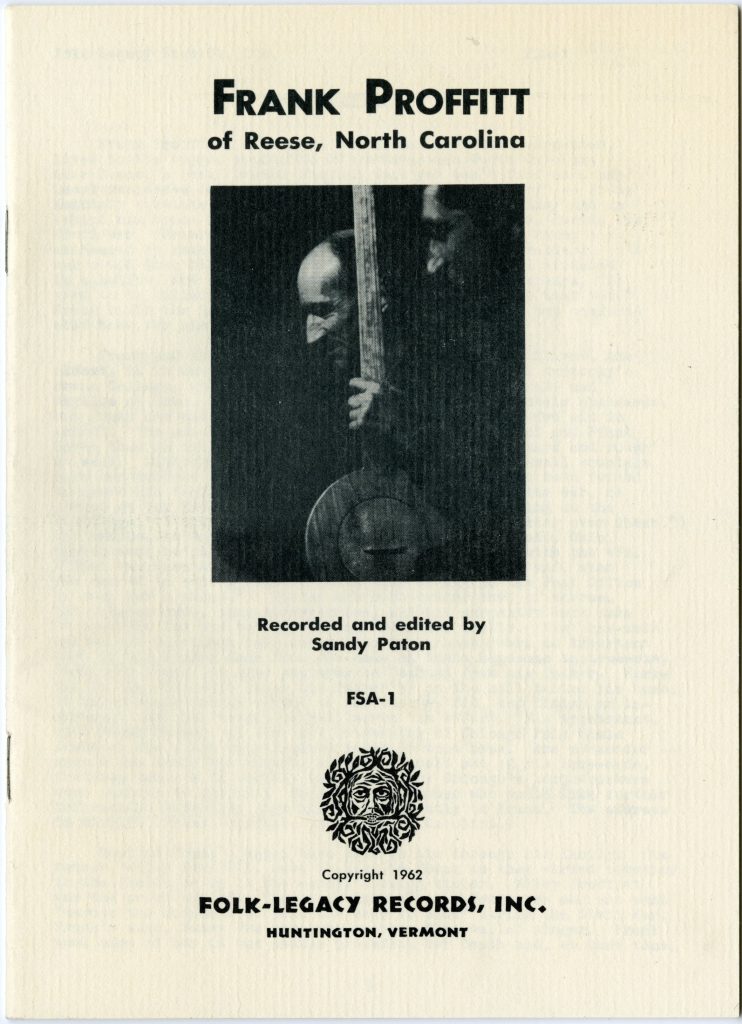 In 1961, Sandy Paton recorded Frank Proffitt, a traditional singer, banjo and dulcimer player and instrument maker, in his home in Reese, North Carolina. 14 songs from that recording session were released on the 1962 Folkways album, Frank Proffitt Sings Folk Songs. Sandy Paton was a folk singer in his own right, having already released a well-reviewed album on Elektra Records in 1958, The Many Sides of Sandy Paton. In 1961, however, Paton and an old friend, Lee B. Haggerty, decided to start a record label in Huntington, Vermont. Paton had not been completely satisfied with the Folkways release of Frank Proffitt’s songs, and decided to release more material of his as the first LP on his new label, Folk-Legacy Records. This new album, Frank Proffitt of Reese, North Carolina, featured 17 songs, including the song preserved by Proffitt and made famous by the Kingston Trio, “Tom Dooley.” Most of the songs are of unknown authorship and are credited as traditional, while 4 are credited to Proffitt and 4 more are ballads collected by Francis James Child in the late 19th century. This first Folk-Legacy release, with a stark black-and-white cover, simple packaging, and comprehensive liner notes, is emblematic of their early catalog. In 2001, the album was reissued as Folk-Legacy CD-1, and is now available on digital and streaming platforms.
In 1961, Sandy Paton recorded Frank Proffitt, a traditional singer, banjo and dulcimer player and instrument maker, in his home in Reese, North Carolina. 14 songs from that recording session were released on the 1962 Folkways album, Frank Proffitt Sings Folk Songs. Sandy Paton was a folk singer in his own right, having already released a well-reviewed album on Elektra Records in 1958, The Many Sides of Sandy Paton. In 1961, however, Paton and an old friend, Lee B. Haggerty, decided to start a record label in Huntington, Vermont. Paton had not been completely satisfied with the Folkways release of Frank Proffitt’s songs, and decided to release more material of his as the first LP on his new label, Folk-Legacy Records. This new album, Frank Proffitt of Reese, North Carolina, featured 17 songs, including the song preserved by Proffitt and made famous by the Kingston Trio, “Tom Dooley.” Most of the songs are of unknown authorship and are credited as traditional, while 4 are credited to Proffitt and 4 more are ballads collected by Francis James Child in the late 19th century. This first Folk-Legacy release, with a stark black-and-white cover, simple packaging, and comprehensive liner notes, is emblematic of their early catalog. In 2001, the album was reissued as Folk-Legacy CD-1, and is now available on digital and streaming platforms.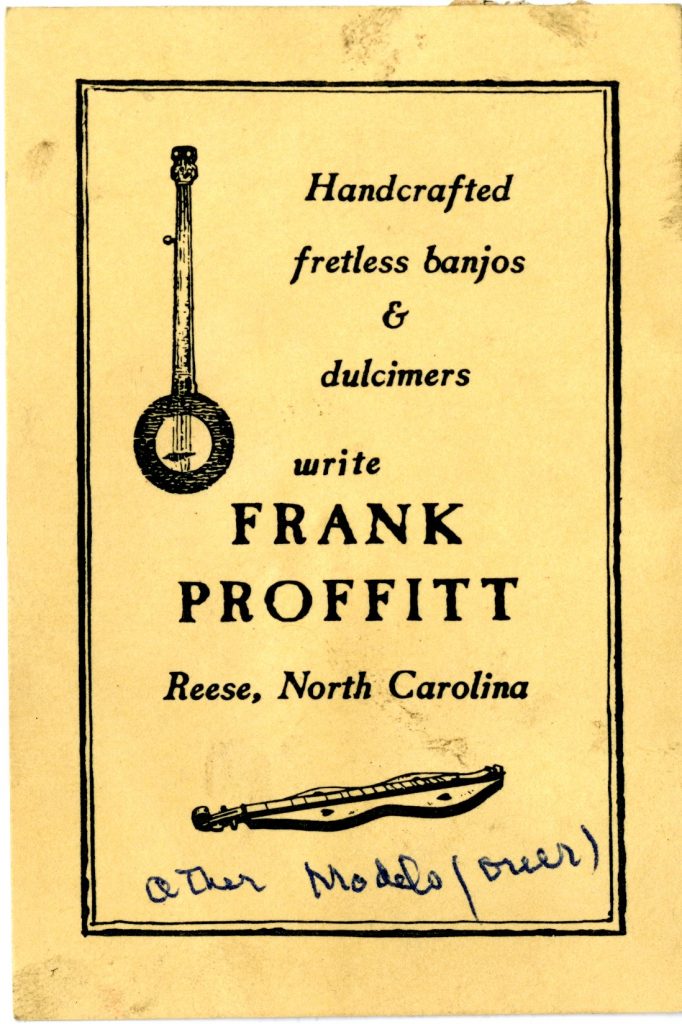
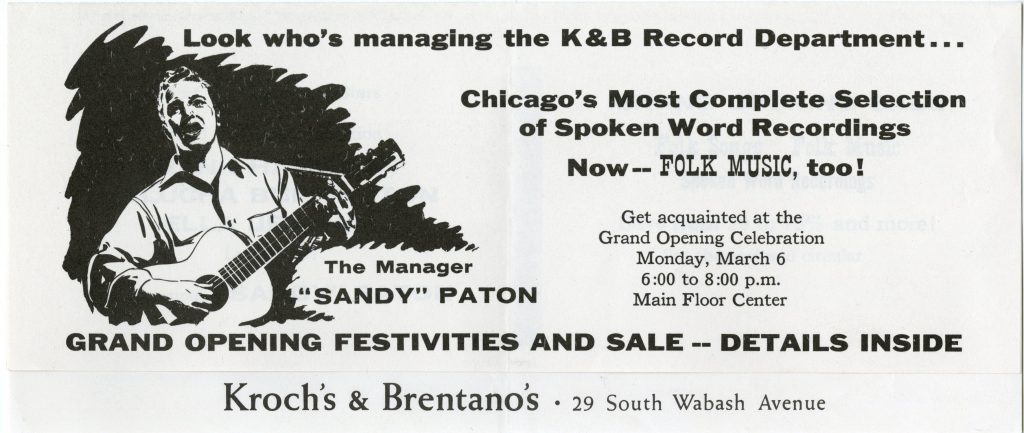
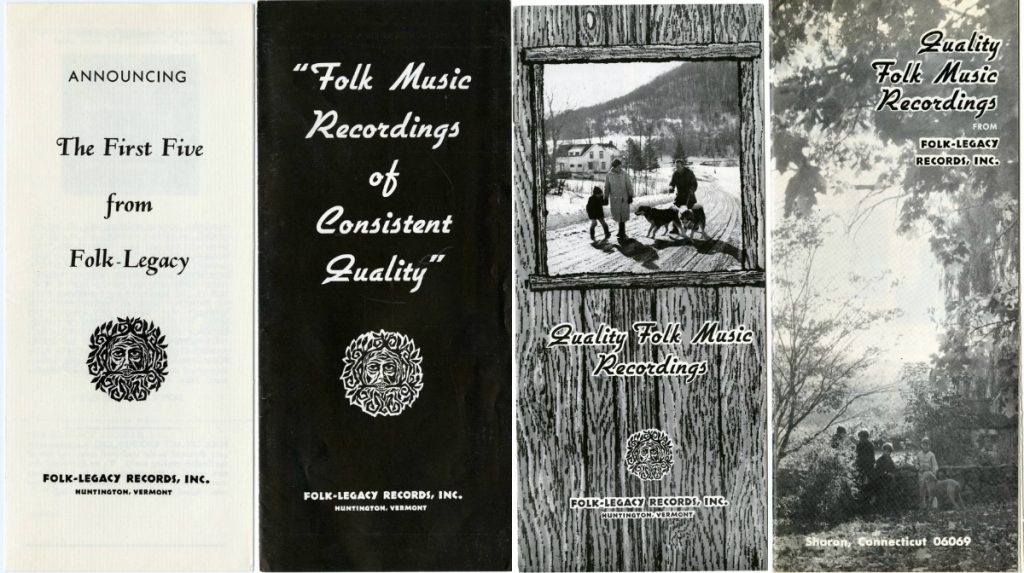
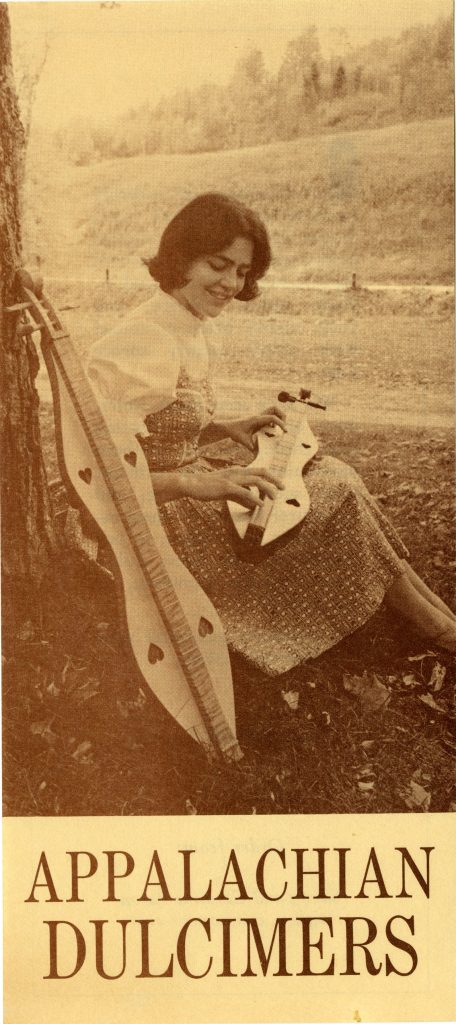
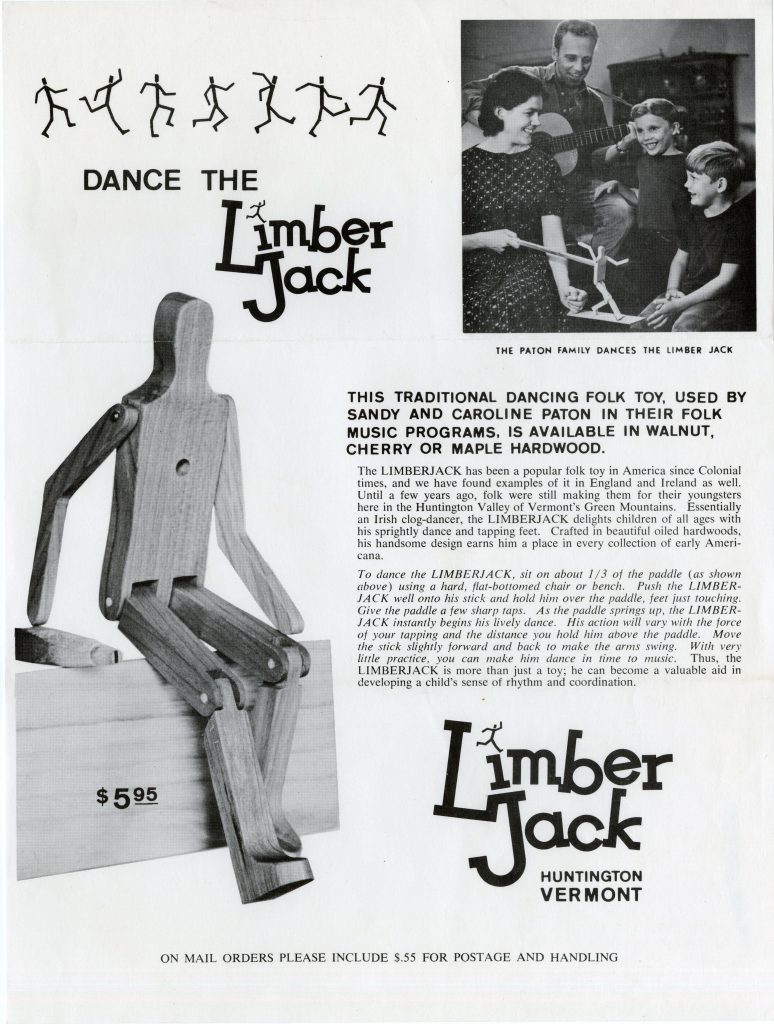

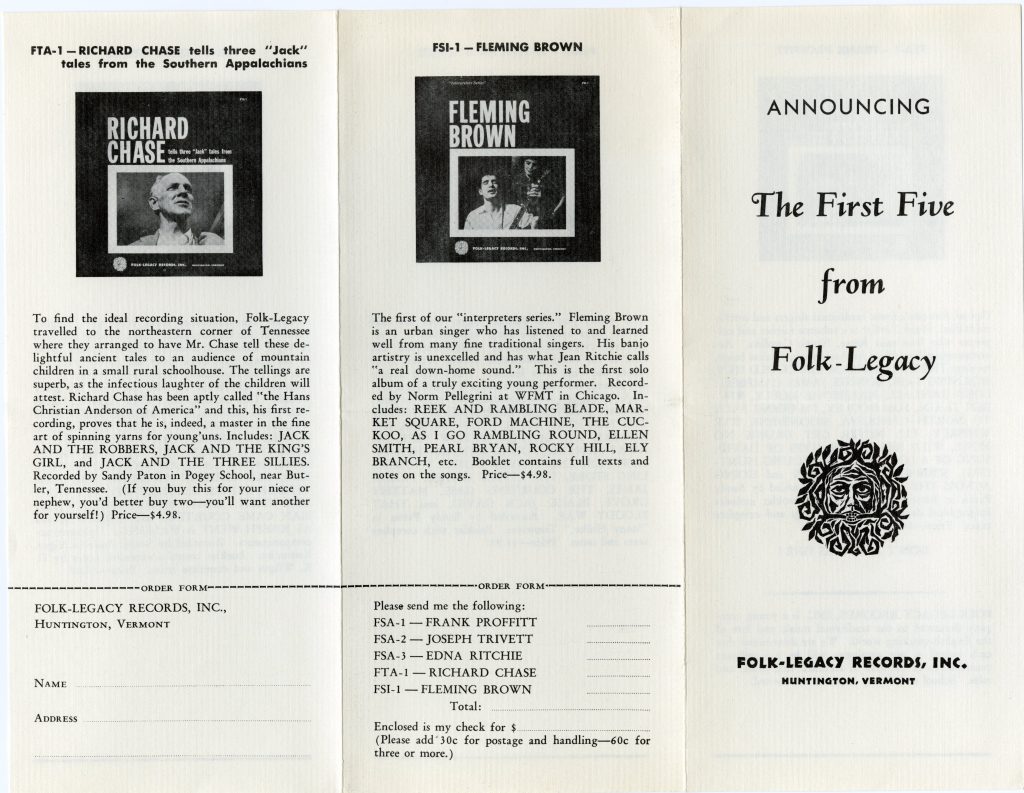
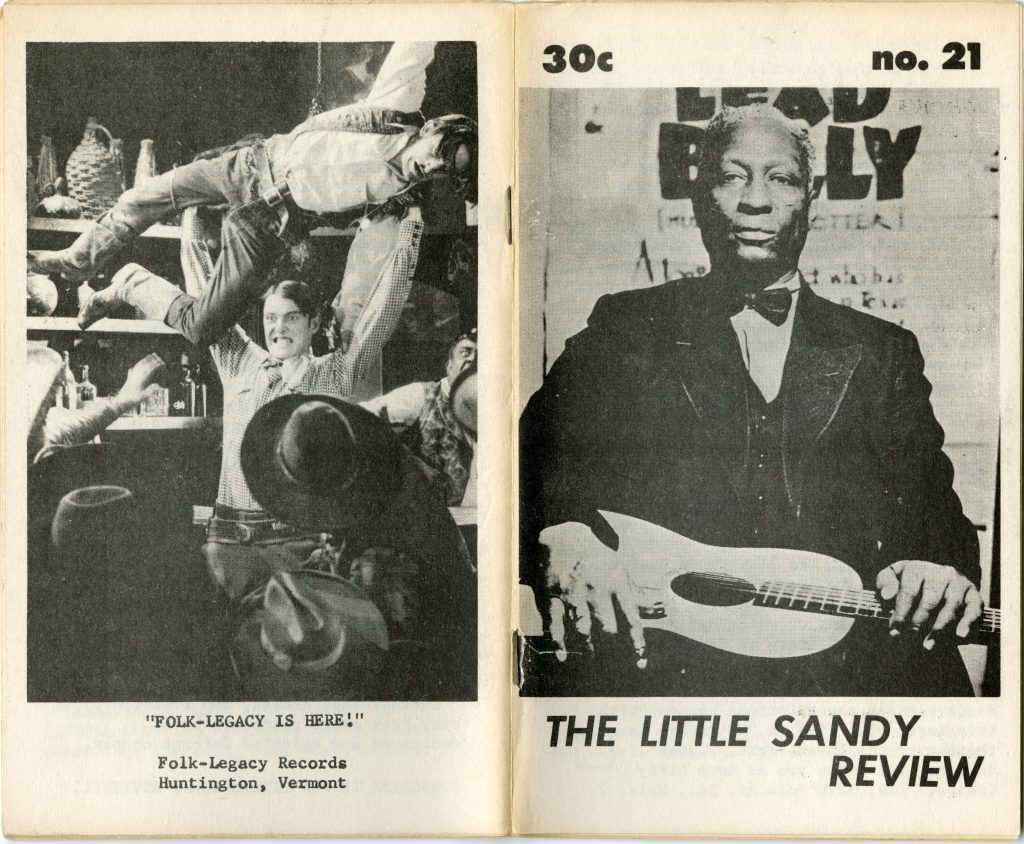
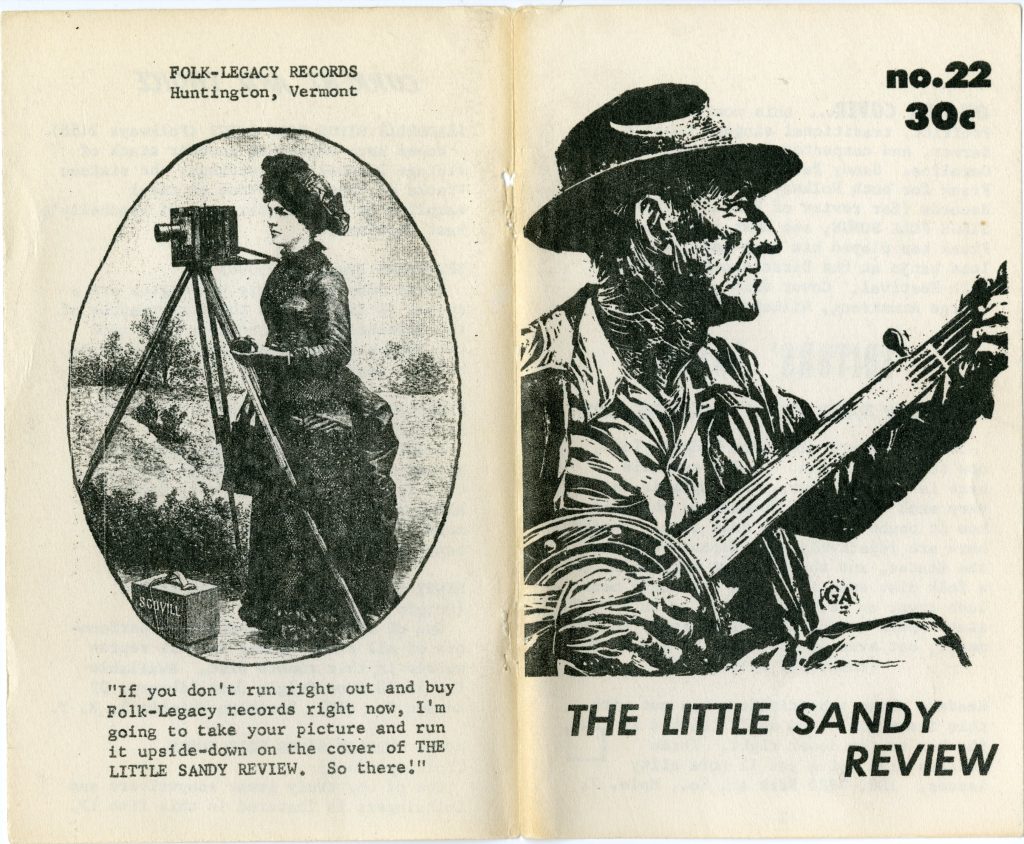
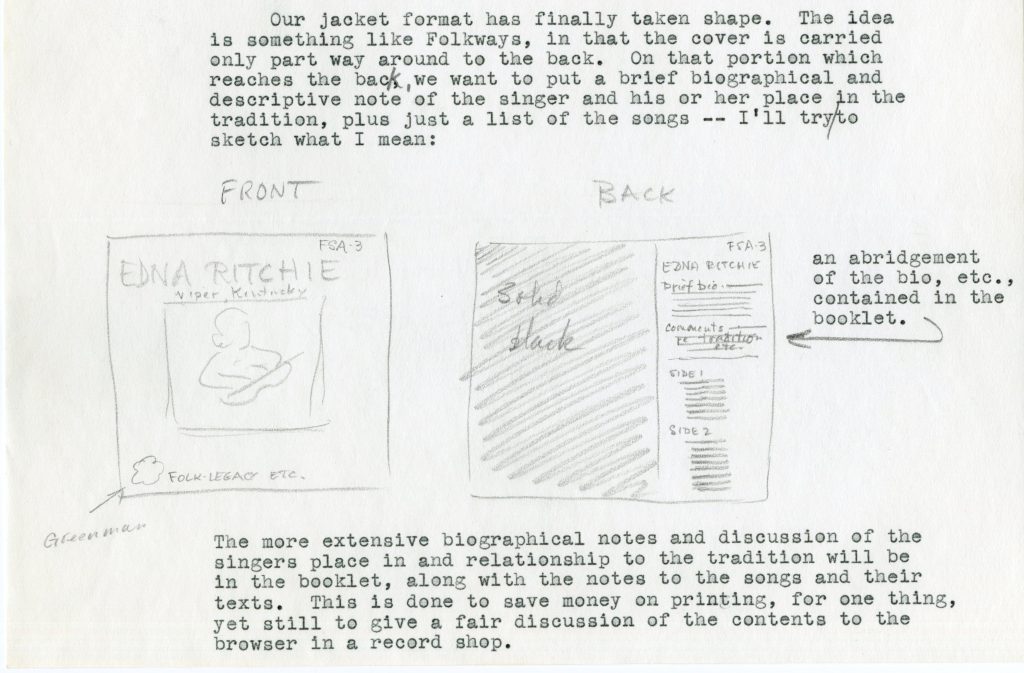
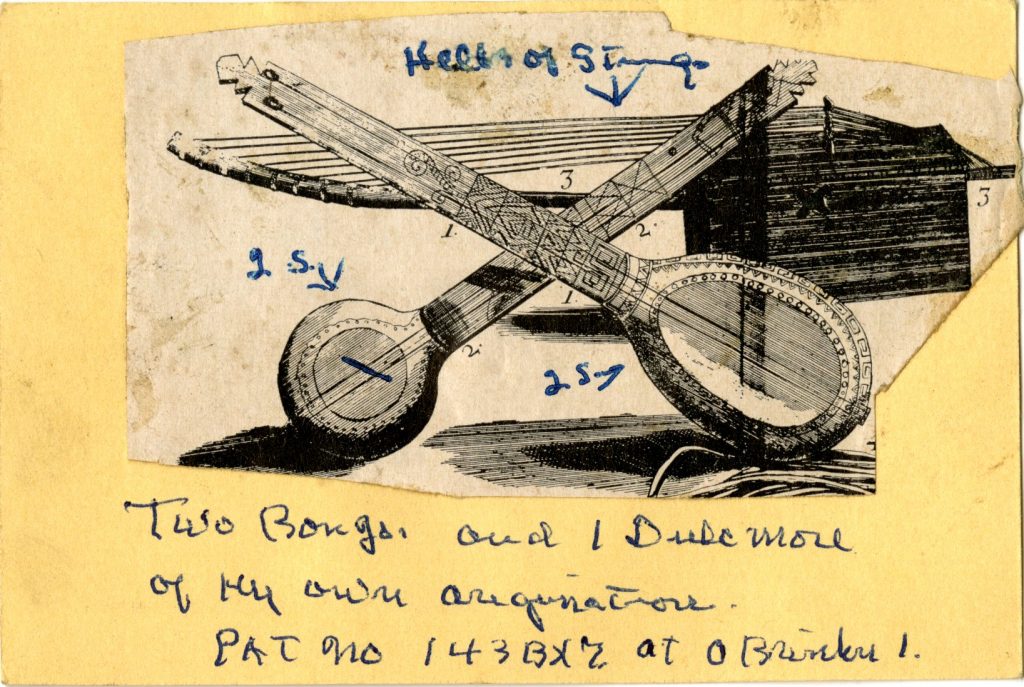

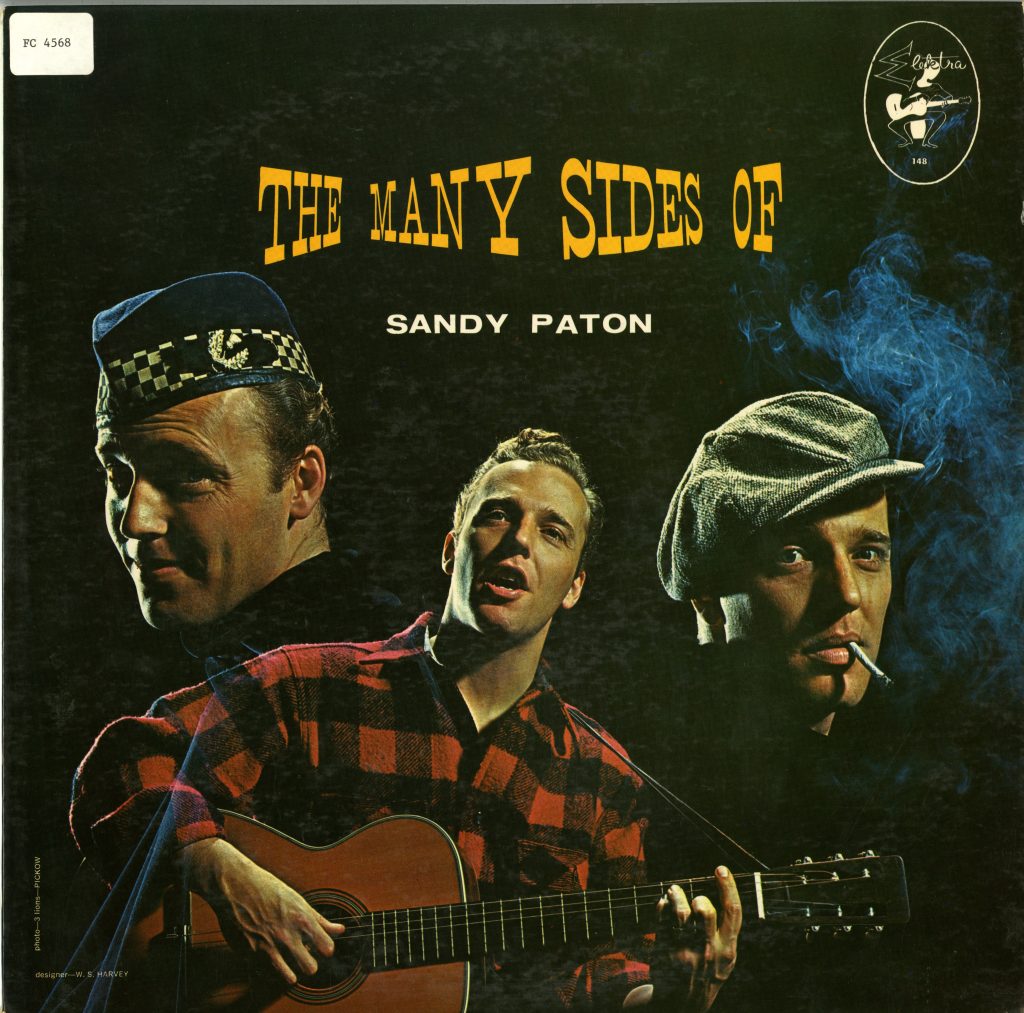


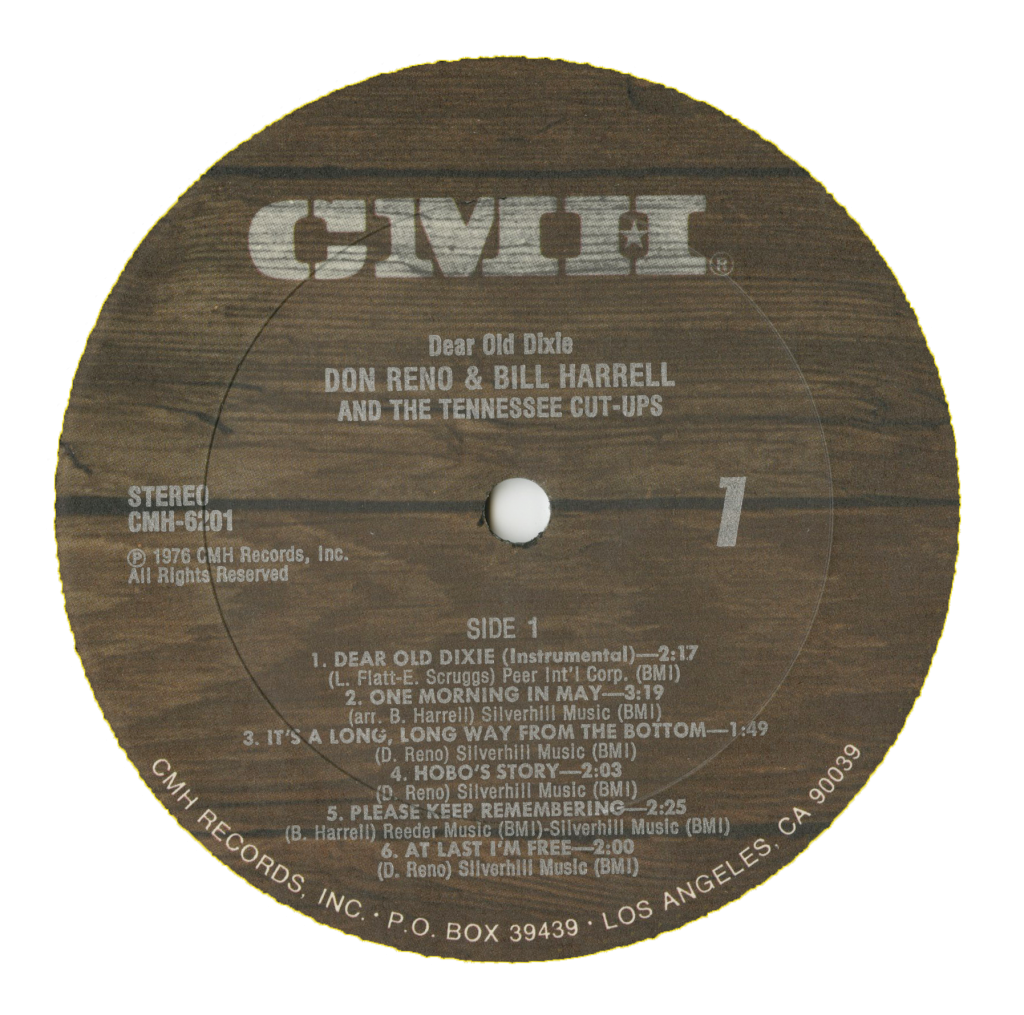 In 1975, country music industry veterans Martin Haerle and Arthur Smith started CMH Records, and Don Reno, Bill Harrell, and the Tennessee Cut-Ups were a perfect fit for the label’s first release. Haerle had many connections from his experience at Starday Records and in the radio business, and Don Reno had performed with Arthur Smith on several occasions. Don Reno, Bill Harrell, and their band were, by 1975, long-established bluegrass musicians. Performing with Bill Monroe’s Blue Grass Boys and, most famously, Red Smiley, Don Reno was a member of the first generation of bluegrass musicians that established the sound of the genre in the 1940s and 50s. Bill Harrell, too, was one of bluegrass’ most popular musicians, most successfully recording and performing with his band the Virginians. CMH, short for Country Music Heritage, aimed to give a home to these prominent, if aging, artists, many of whom had been dropped from the rosters at major labels. Don Reno and Bill Harrell had been performing together for over 10 years by the time they recorded Dear Old Dixie at Arthur Smith Studios in Charlotte, North Carolina. The album features mostly original and arranged tunes by the pair, and Arthur Smith even steps in to join Don Reno on guitar on “B.G. Chase,” an instrumental he co-wrote with Reno.
In 1975, country music industry veterans Martin Haerle and Arthur Smith started CMH Records, and Don Reno, Bill Harrell, and the Tennessee Cut-Ups were a perfect fit for the label’s first release. Haerle had many connections from his experience at Starday Records and in the radio business, and Don Reno had performed with Arthur Smith on several occasions. Don Reno, Bill Harrell, and their band were, by 1975, long-established bluegrass musicians. Performing with Bill Monroe’s Blue Grass Boys and, most famously, Red Smiley, Don Reno was a member of the first generation of bluegrass musicians that established the sound of the genre in the 1940s and 50s. Bill Harrell, too, was one of bluegrass’ most popular musicians, most successfully recording and performing with his band the Virginians. CMH, short for Country Music Heritage, aimed to give a home to these prominent, if aging, artists, many of whom had been dropped from the rosters at major labels. Don Reno and Bill Harrell had been performing together for over 10 years by the time they recorded Dear Old Dixie at Arthur Smith Studios in Charlotte, North Carolina. The album features mostly original and arranged tunes by the pair, and Arthur Smith even steps in to join Don Reno on guitar on “B.G. Chase,” an instrumental he co-wrote with Reno.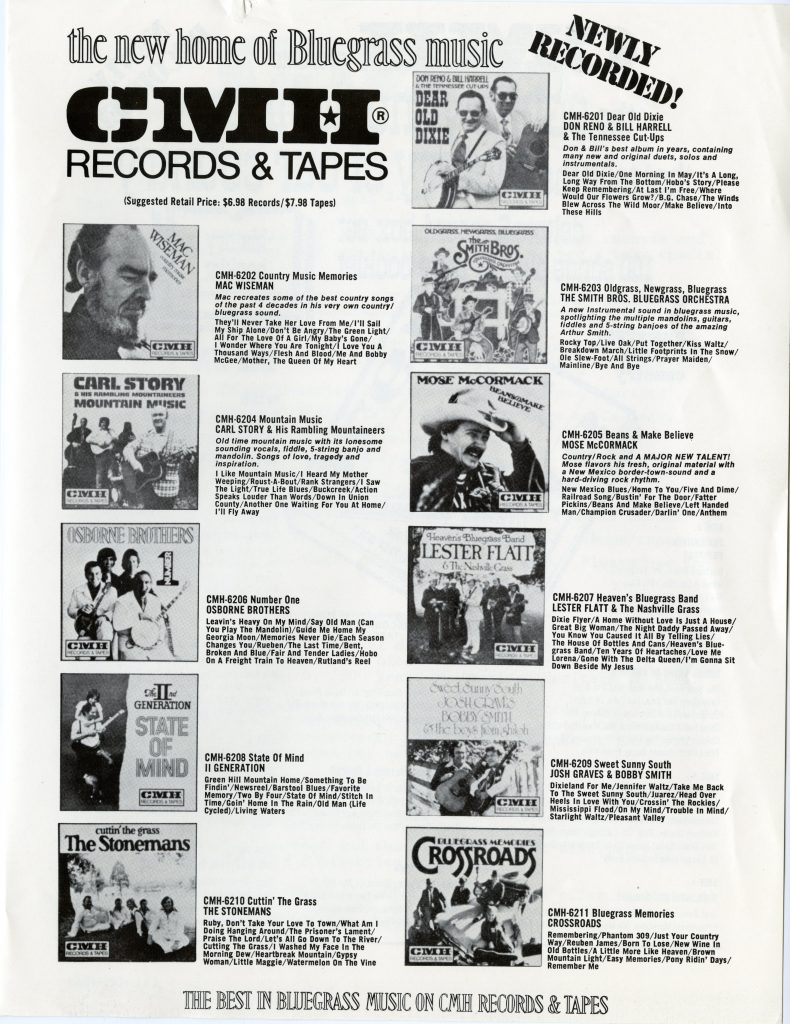
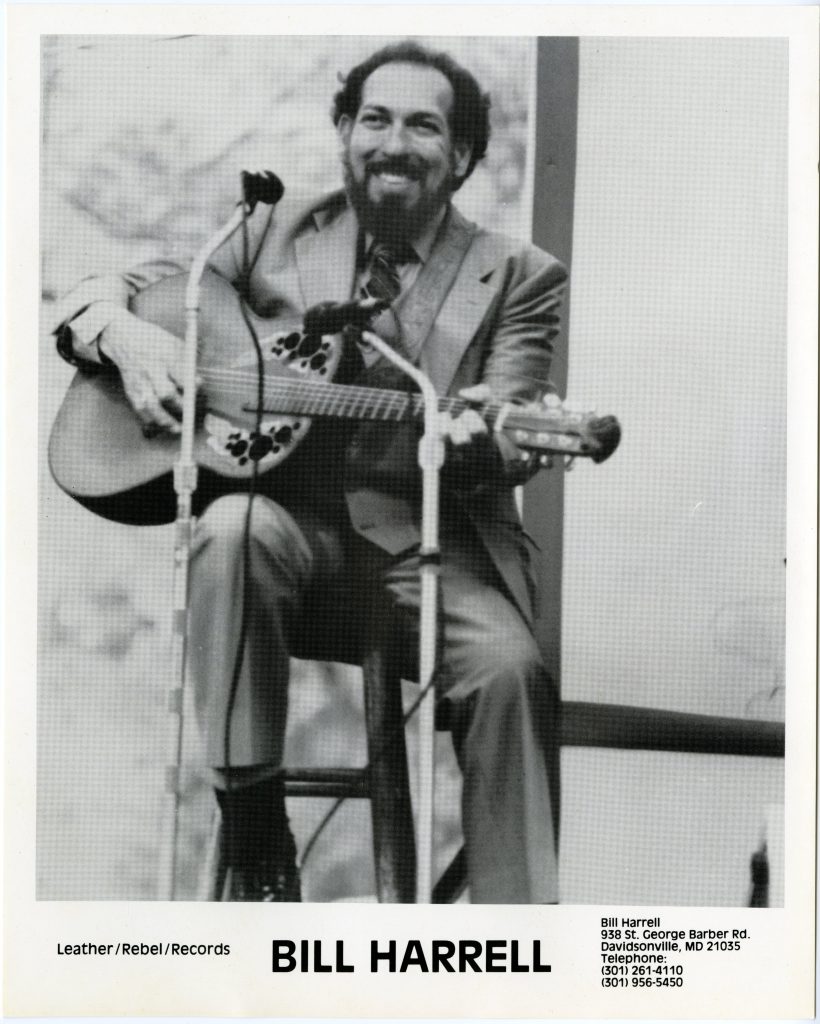
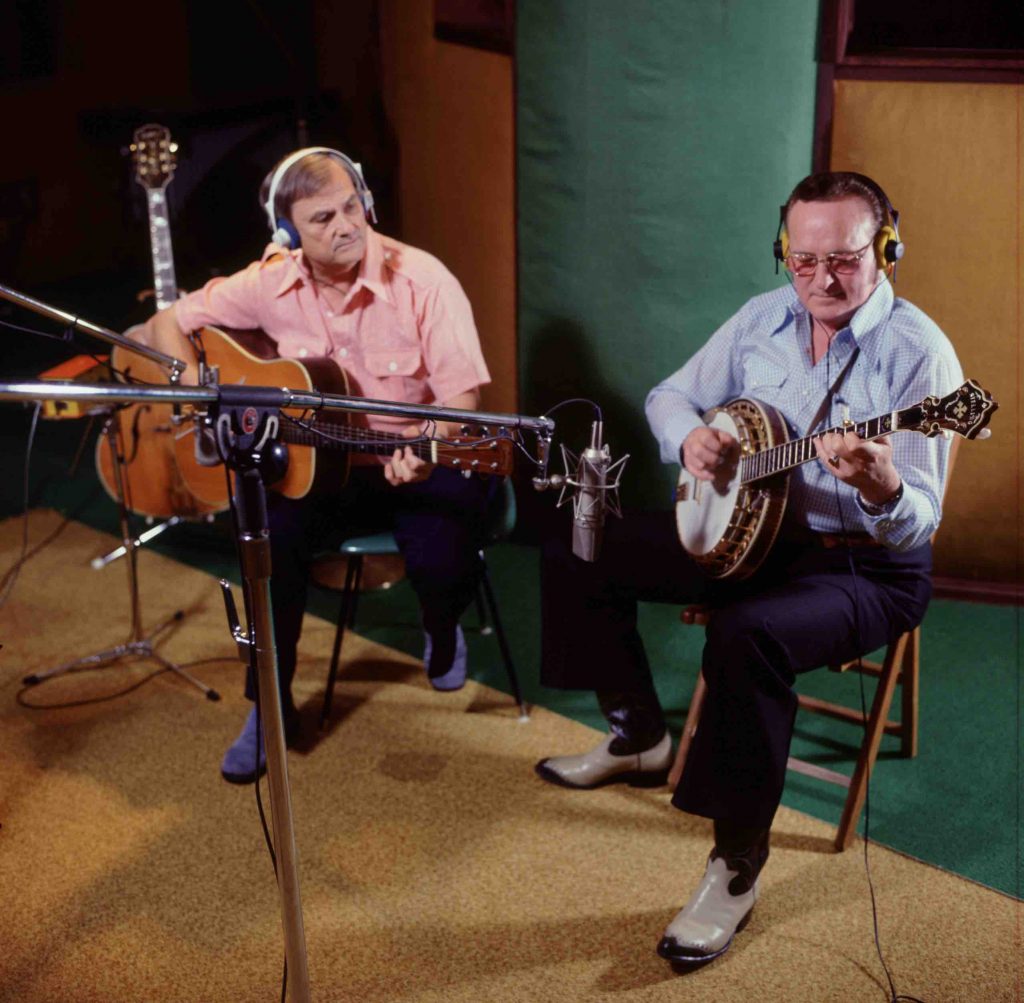
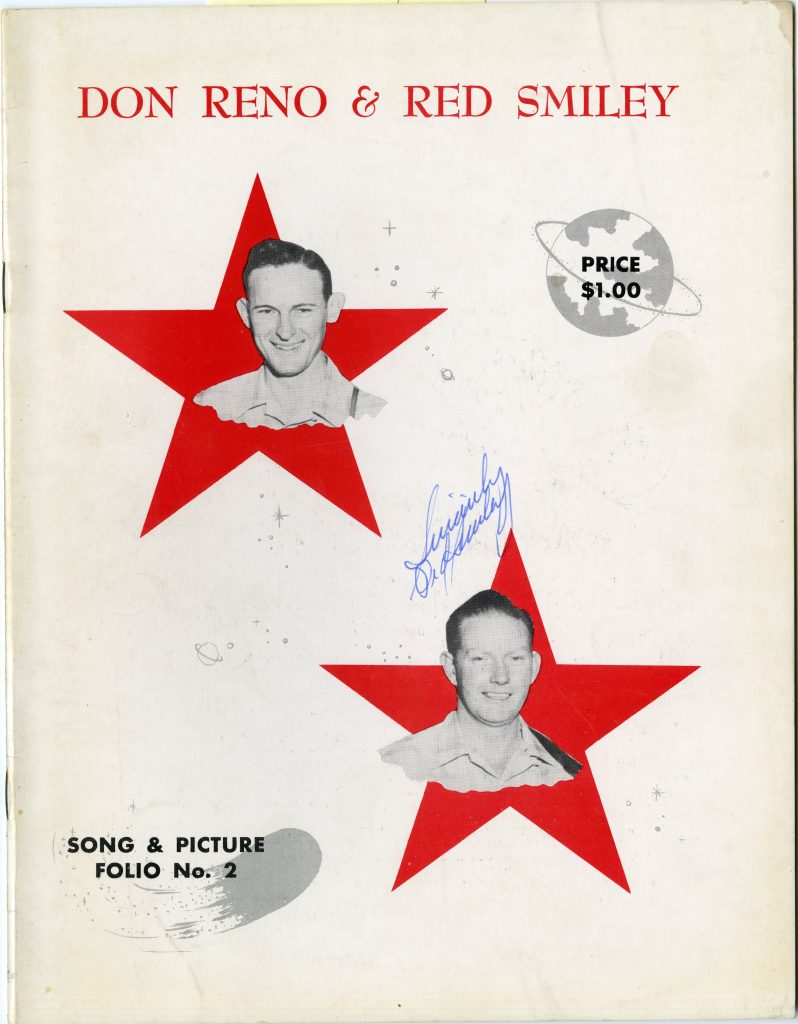
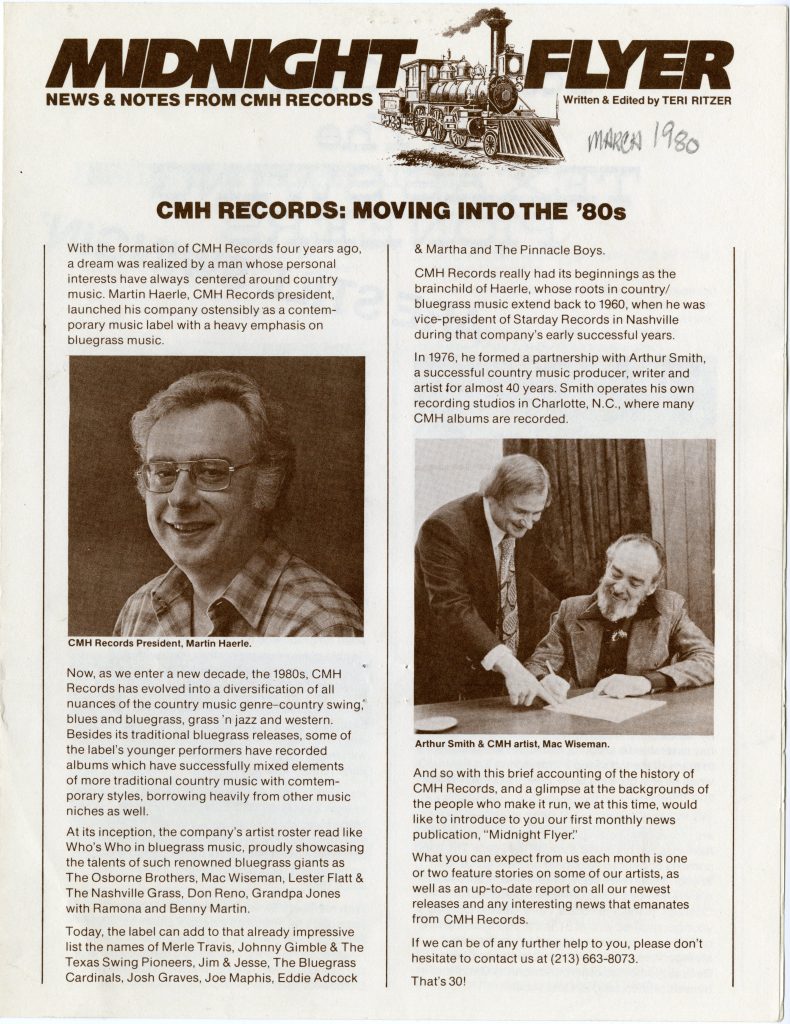
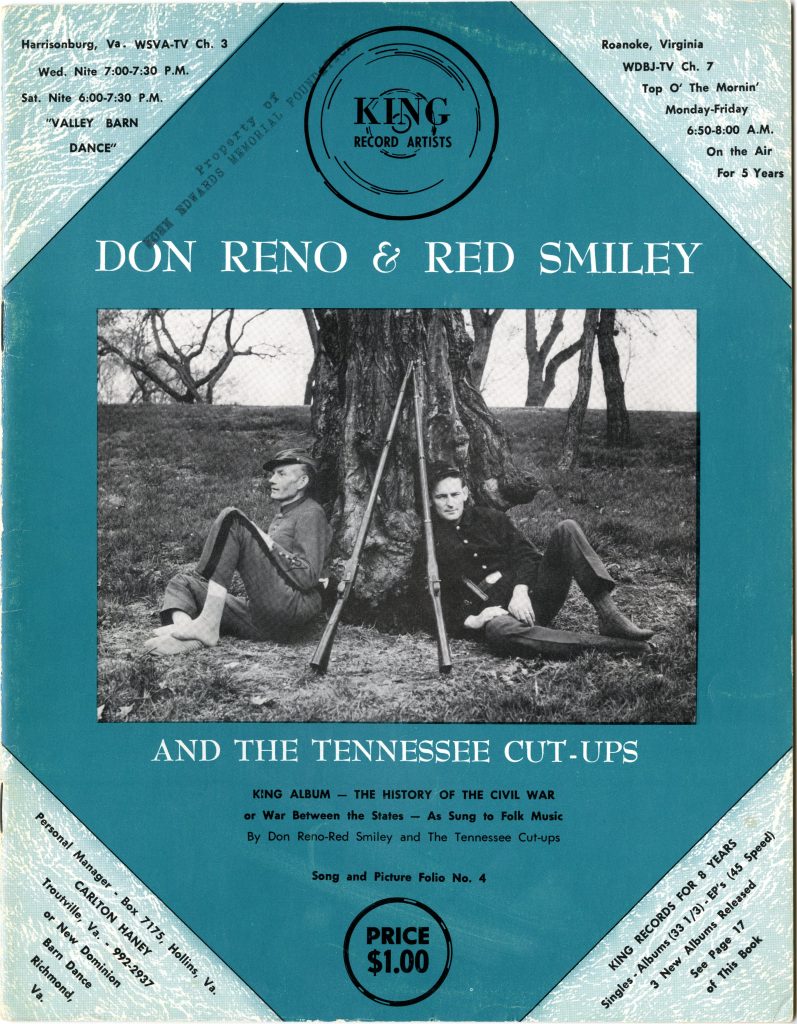

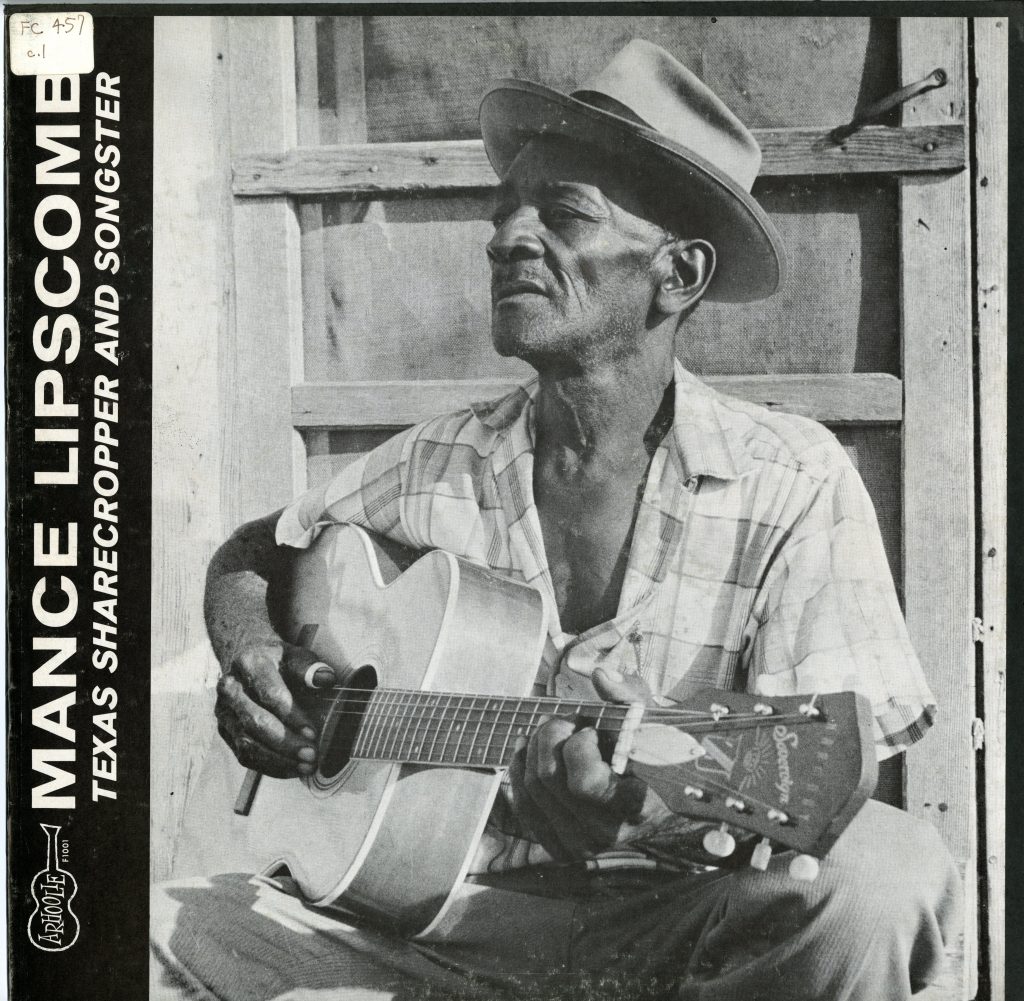
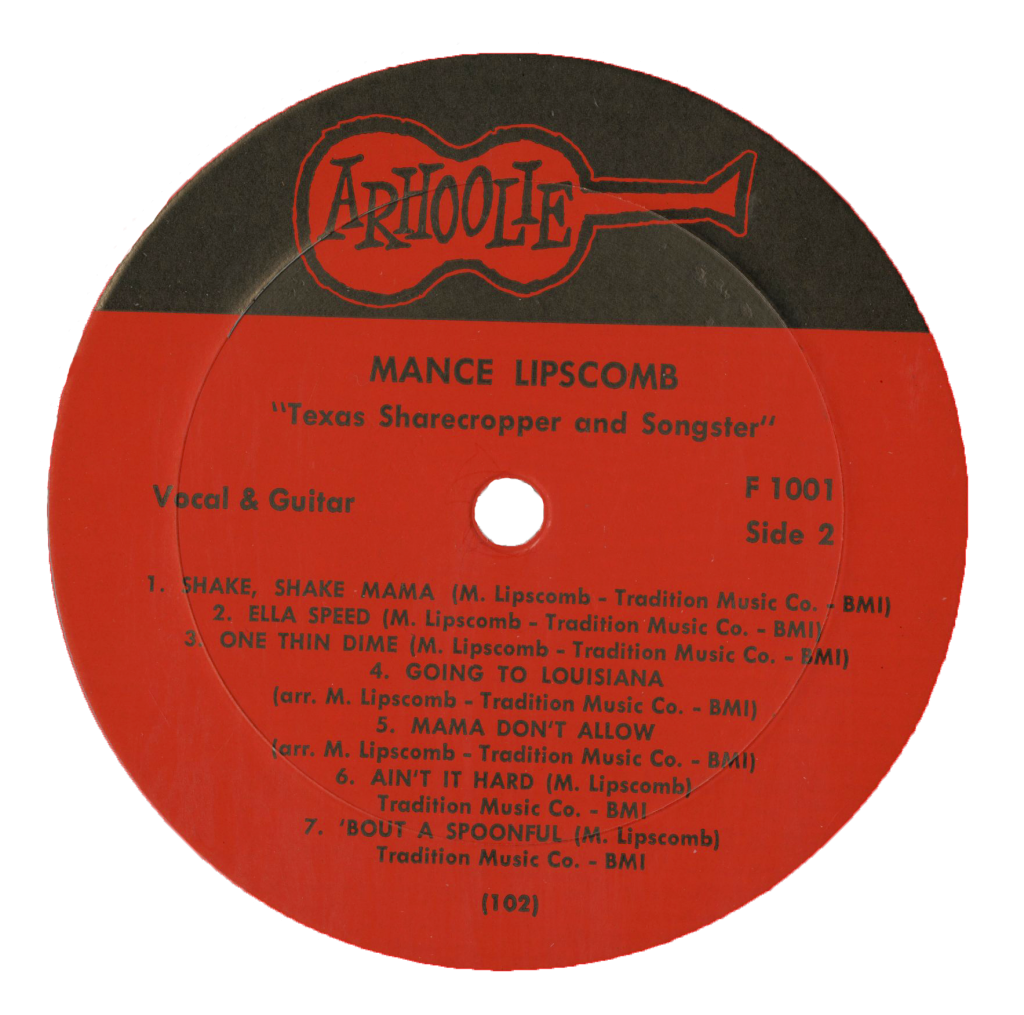


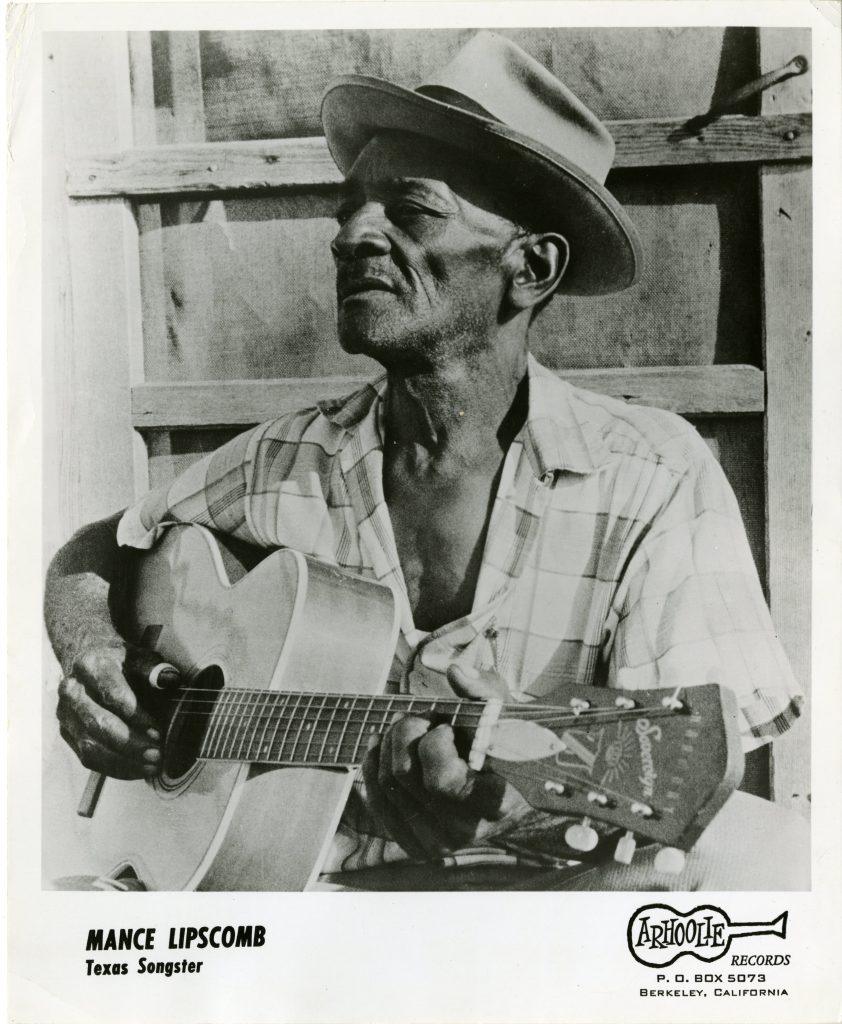
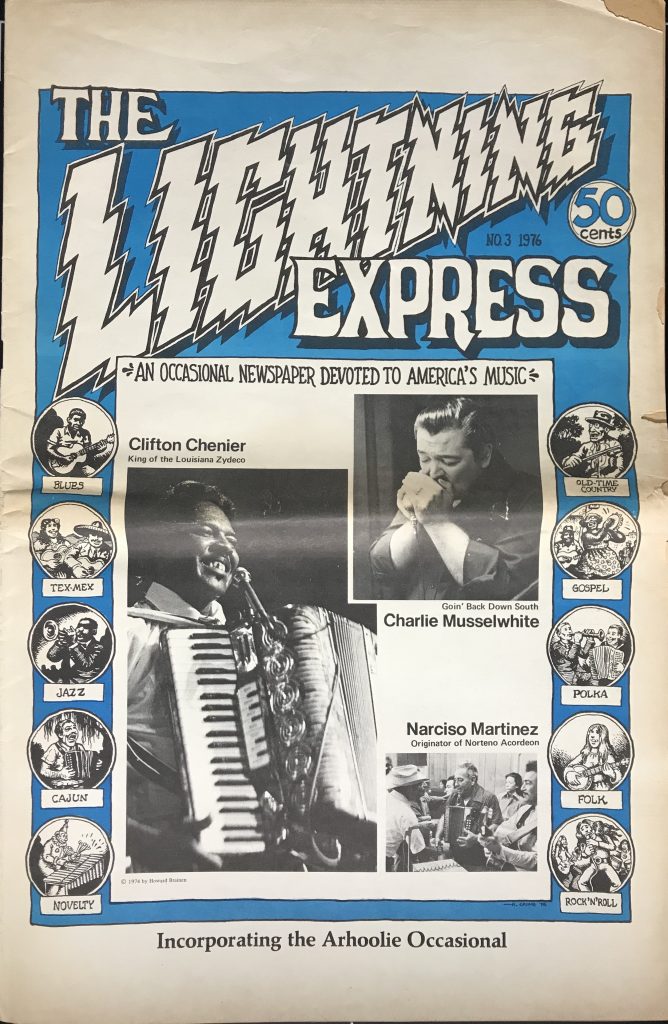

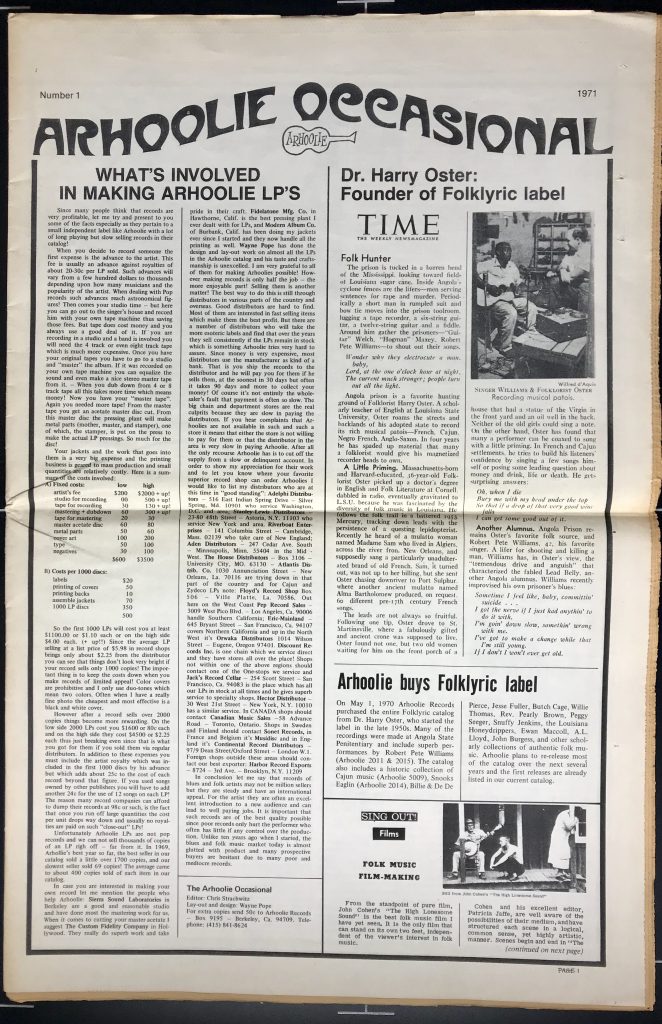
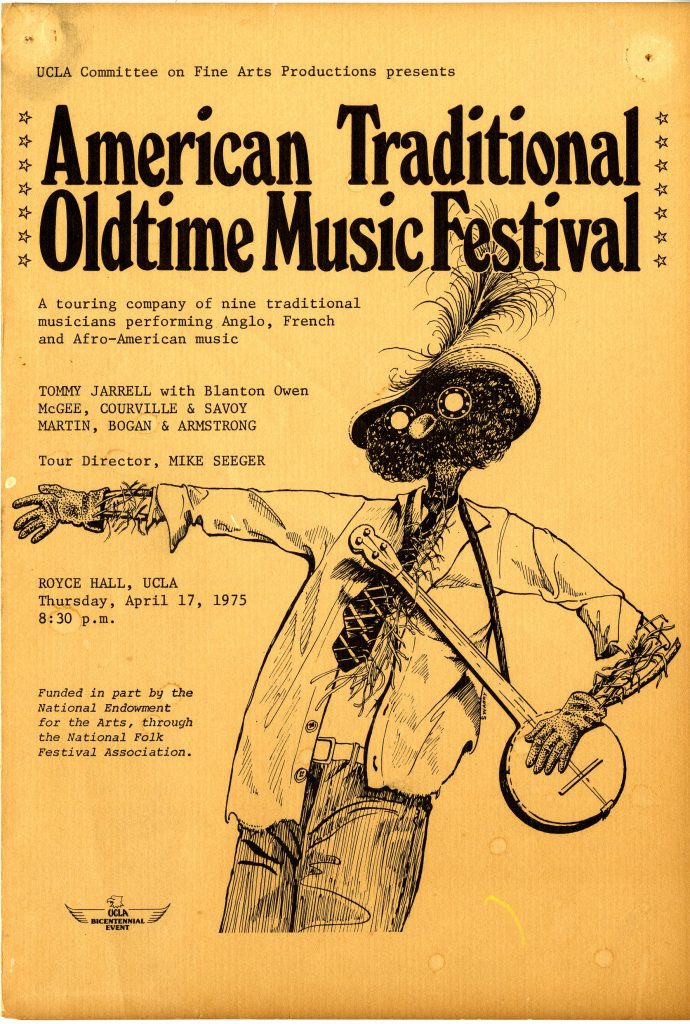
 The American Traditional Old-time Music Festival was a touring festival of old-time musicians directed by Mike Seeger in 1975-76. This brochure, Folder 2877 in the
The American Traditional Old-time Music Festival was a touring festival of old-time musicians directed by Mike Seeger in 1975-76. This brochure, Folder 2877 in the 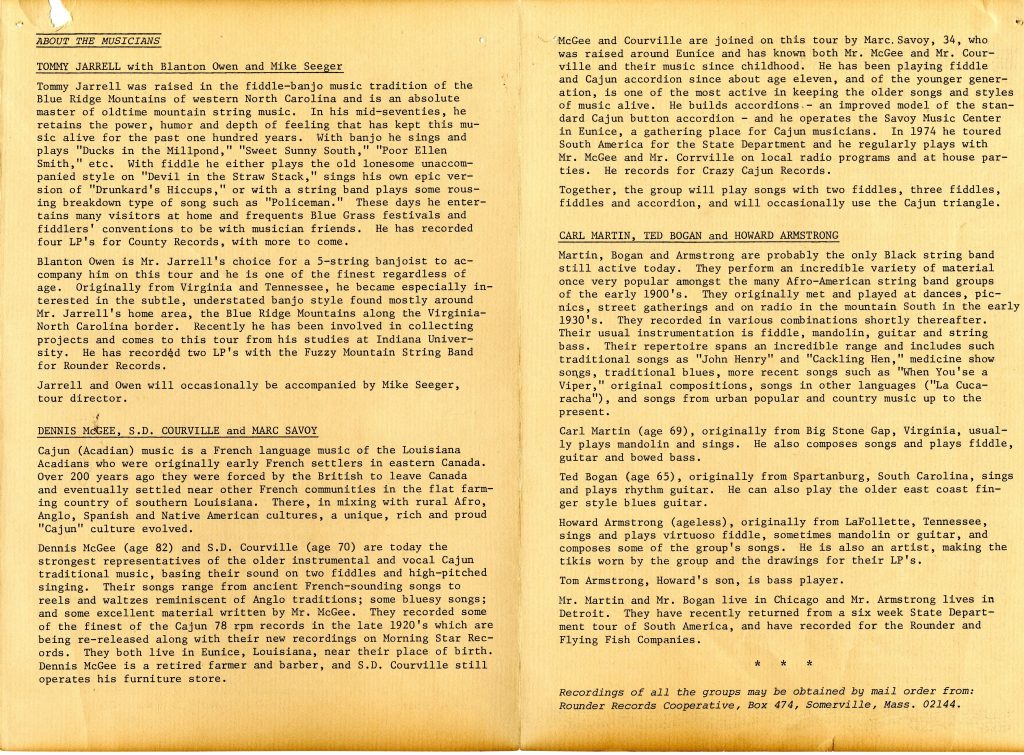
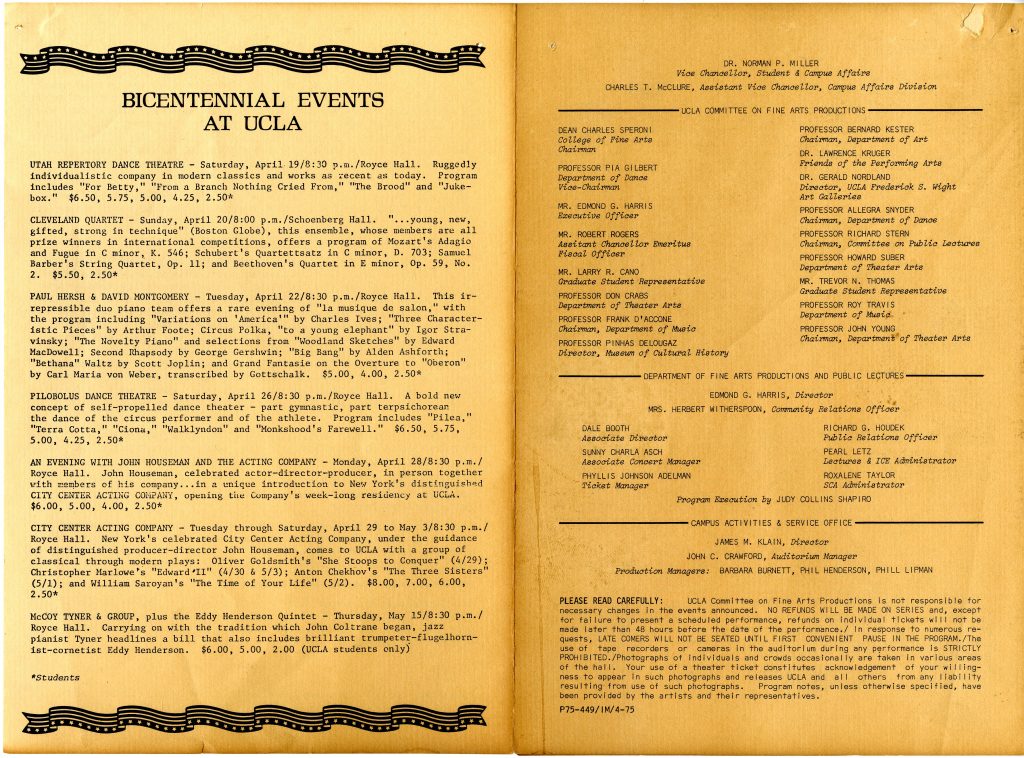
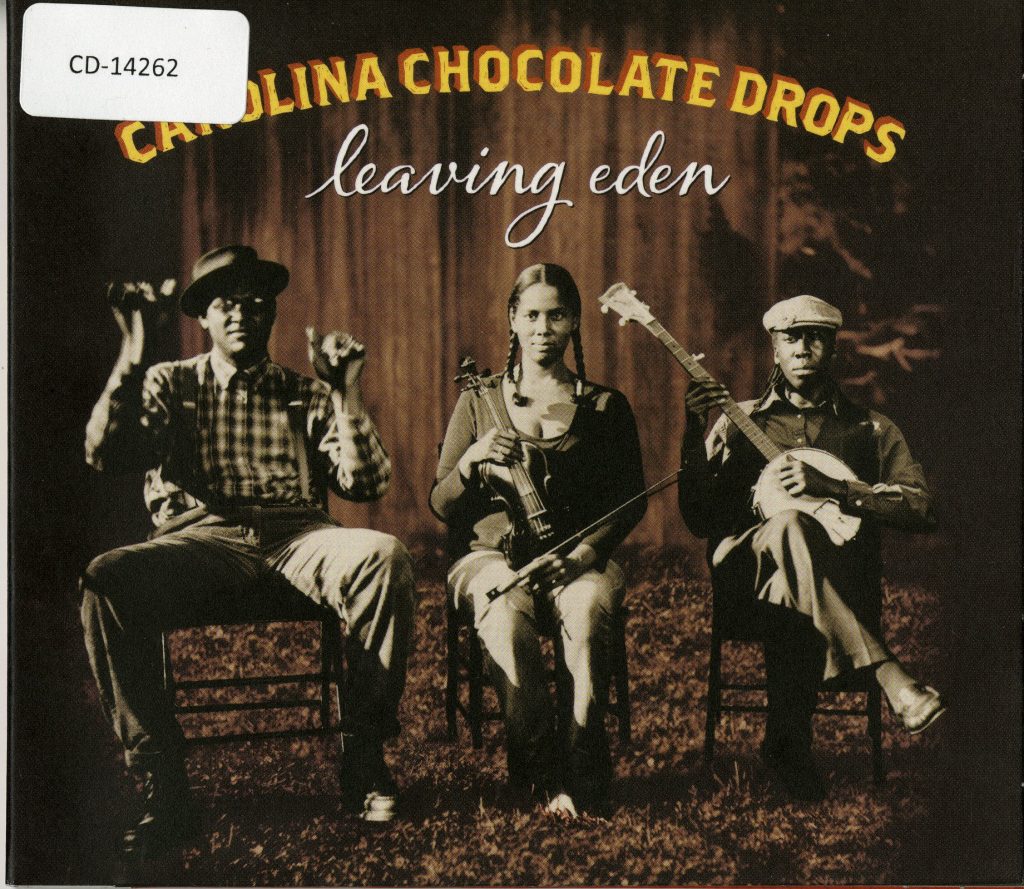 Last year, while writing a final research paper on the Carolina Chocolate Drops’ wonderful 2012 album,
Last year, while writing a final research paper on the Carolina Chocolate Drops’ wonderful 2012 album, 